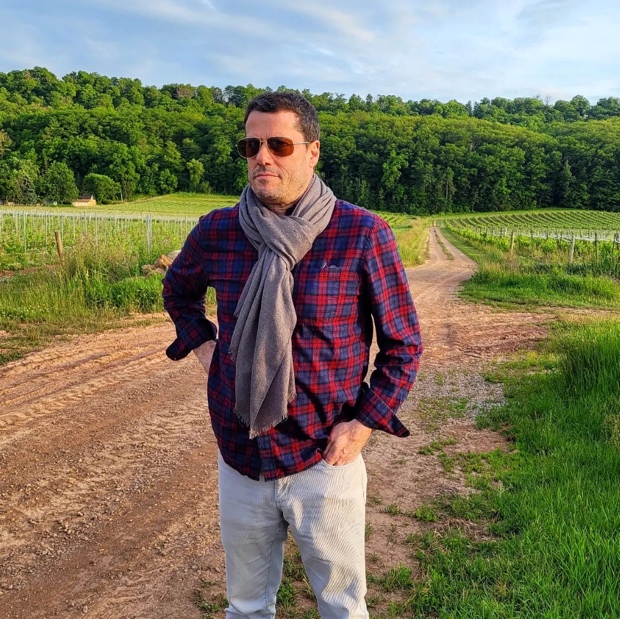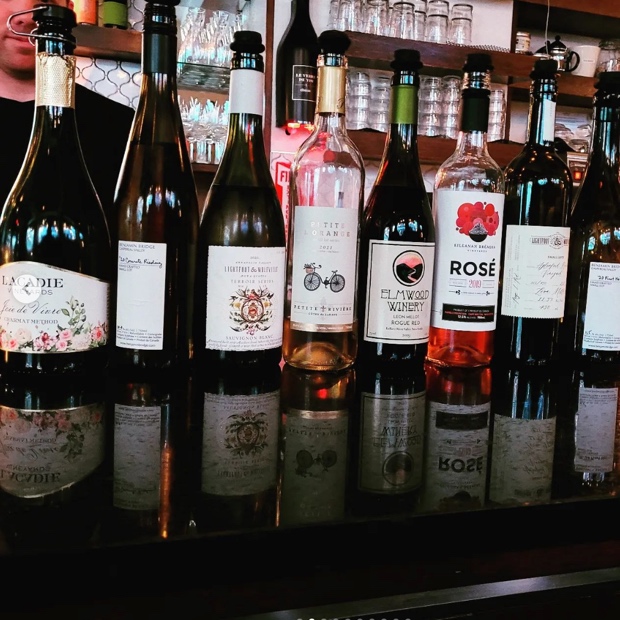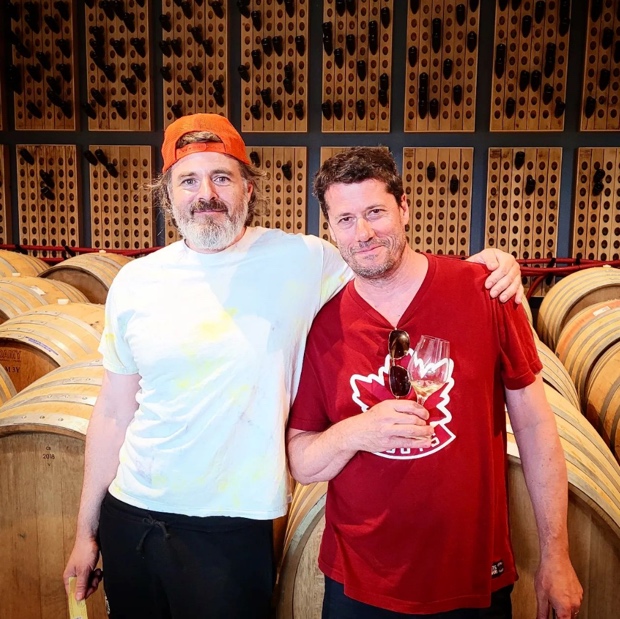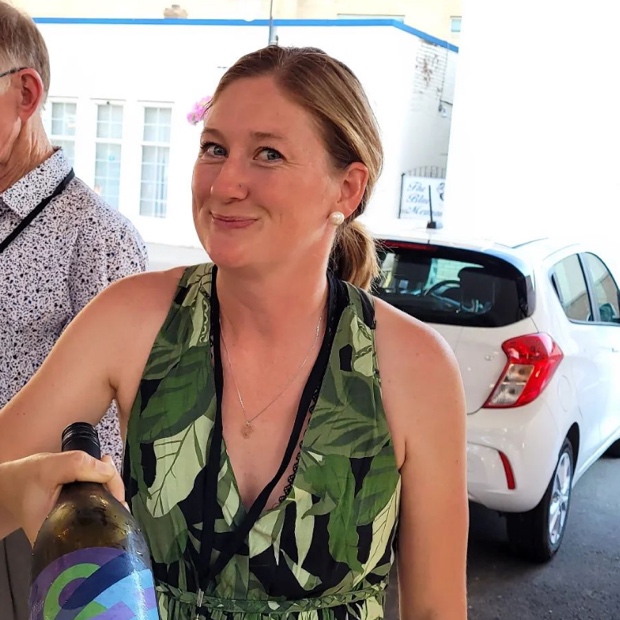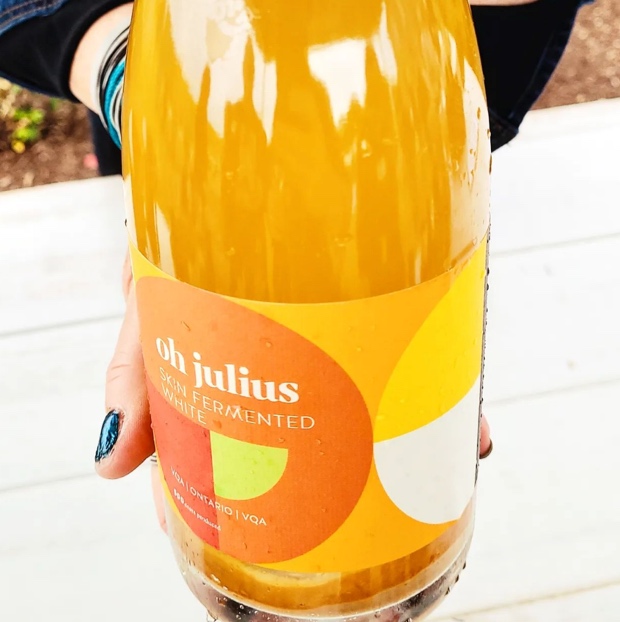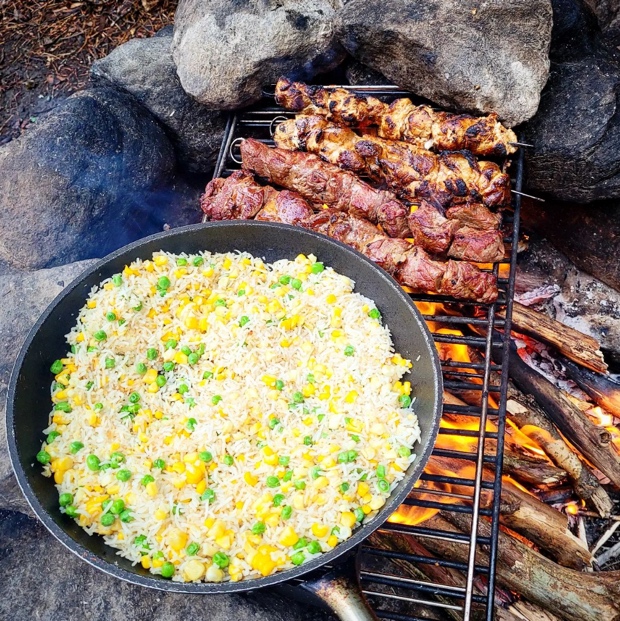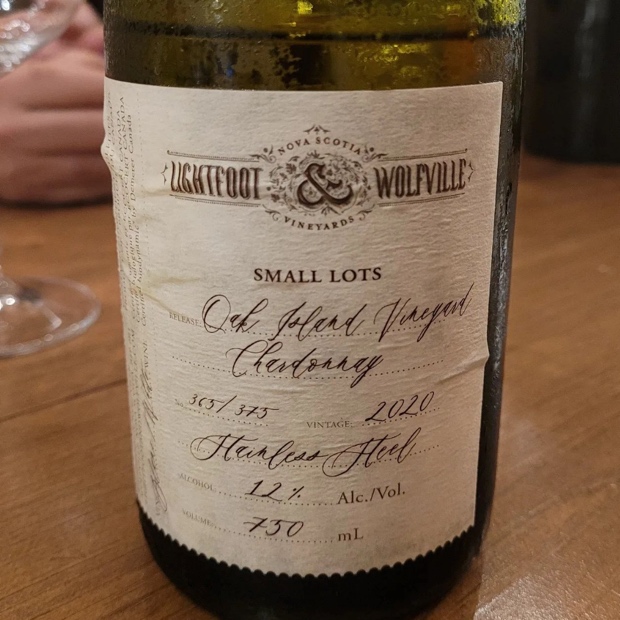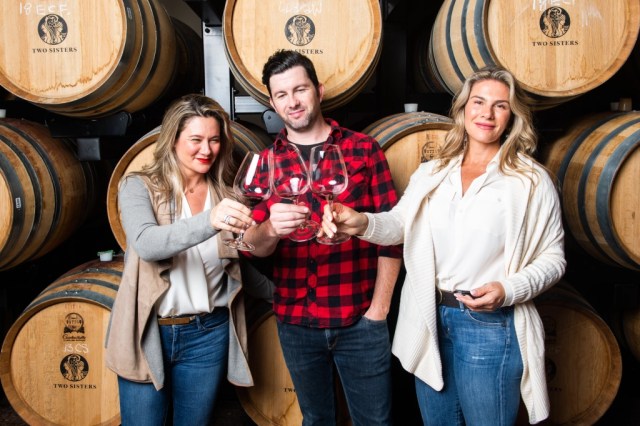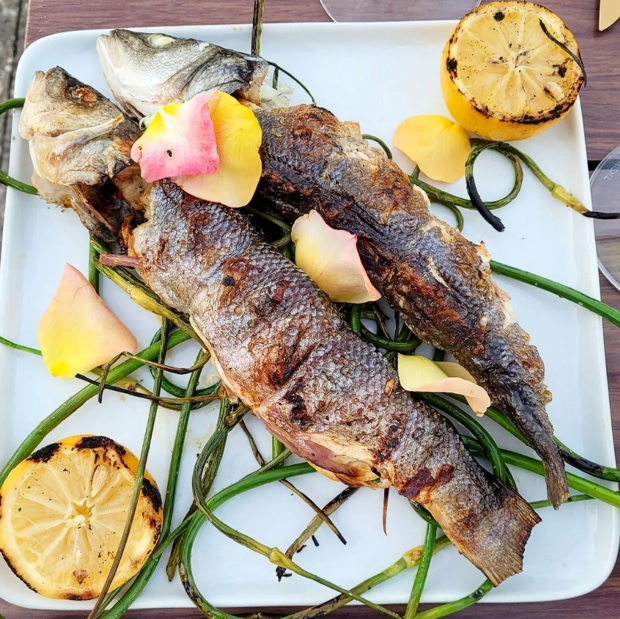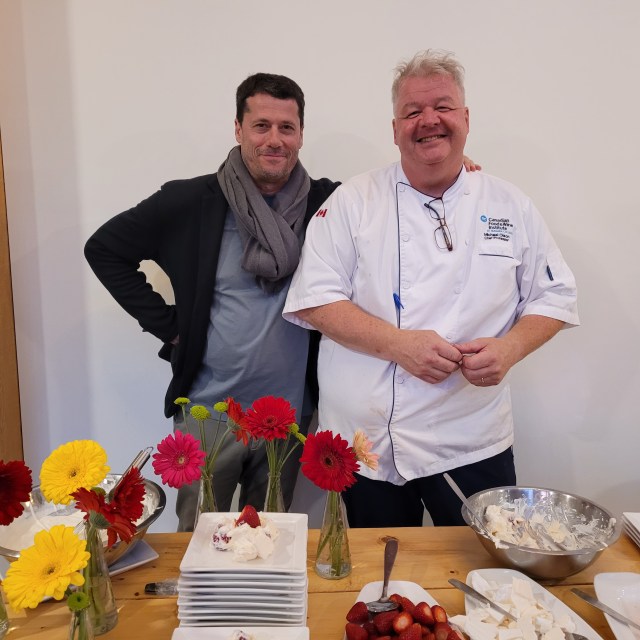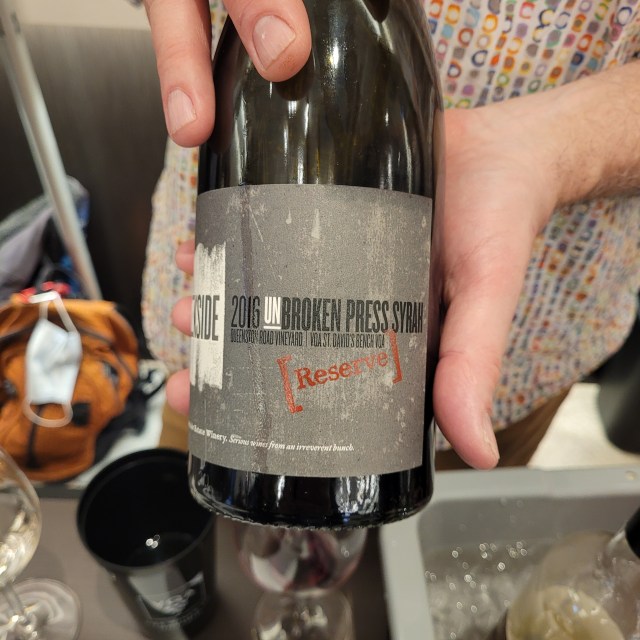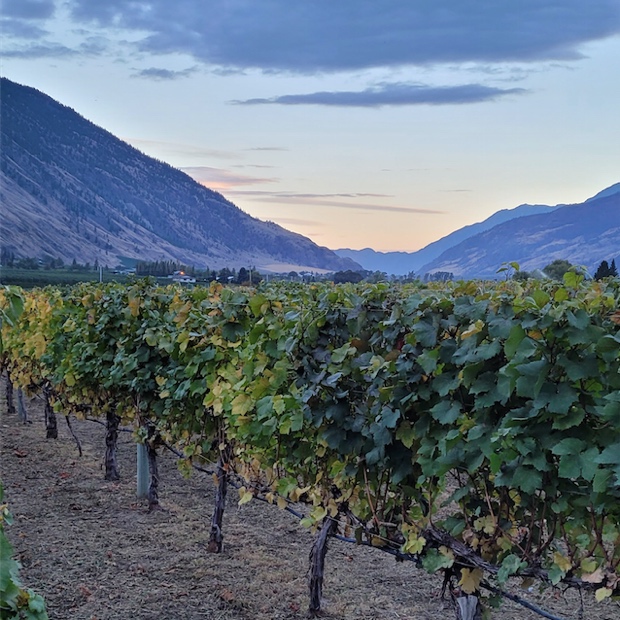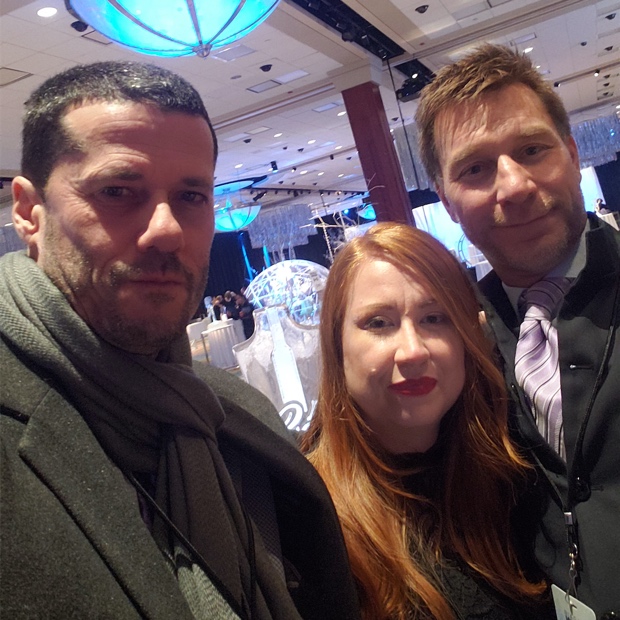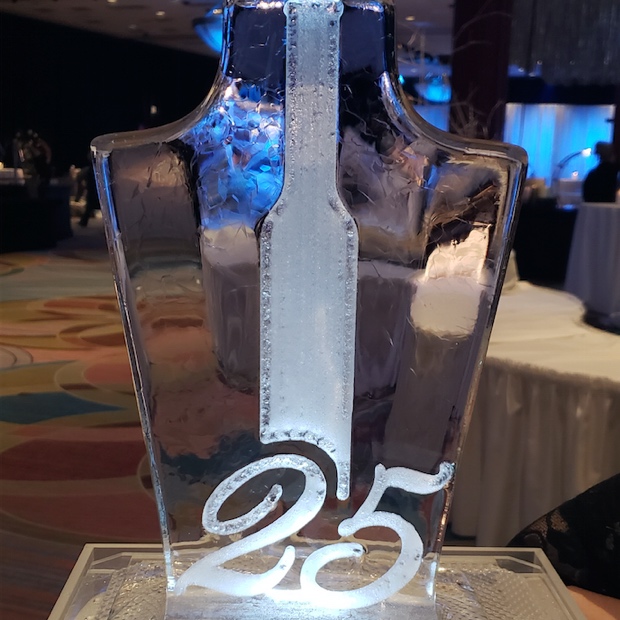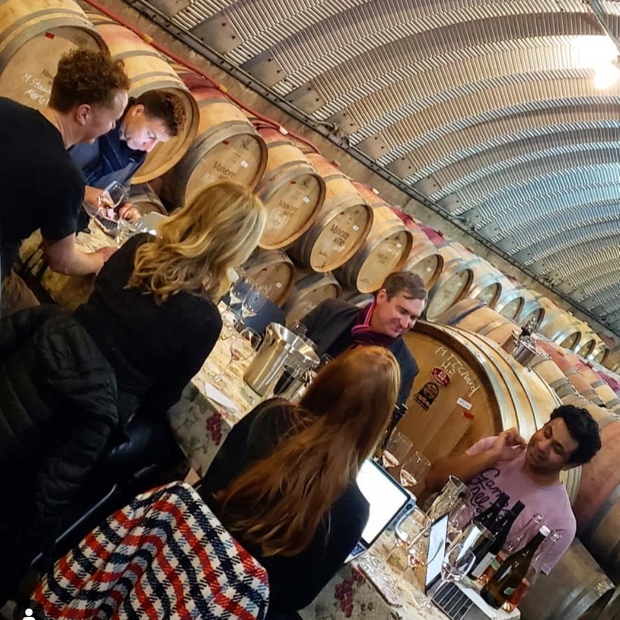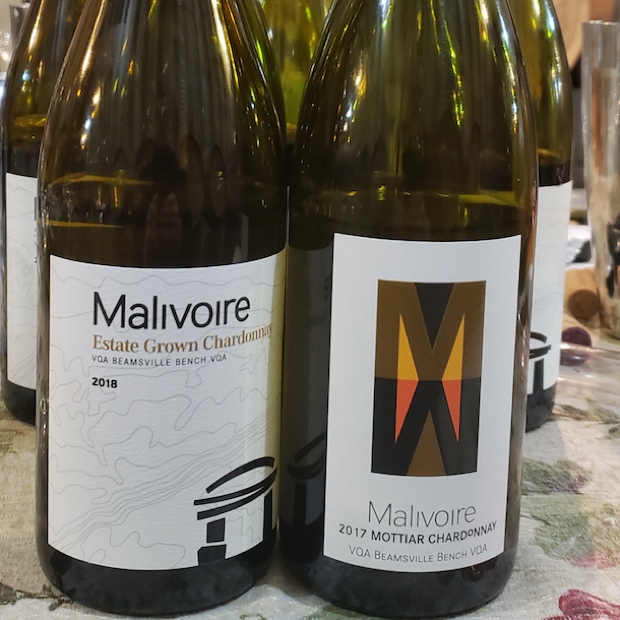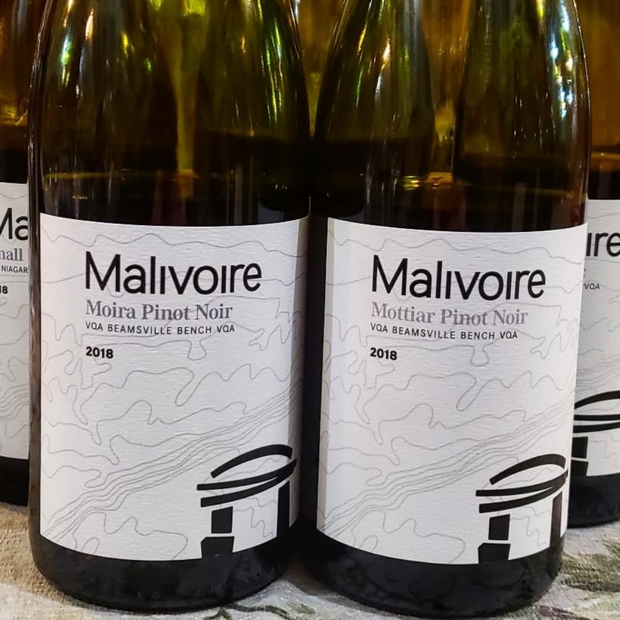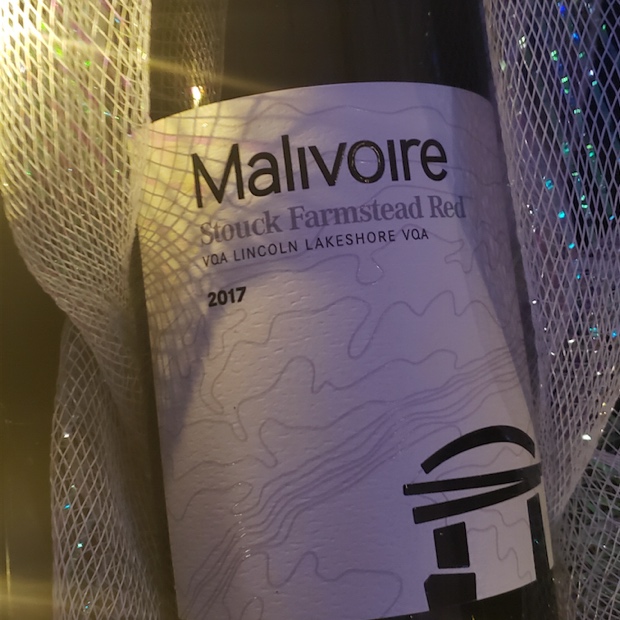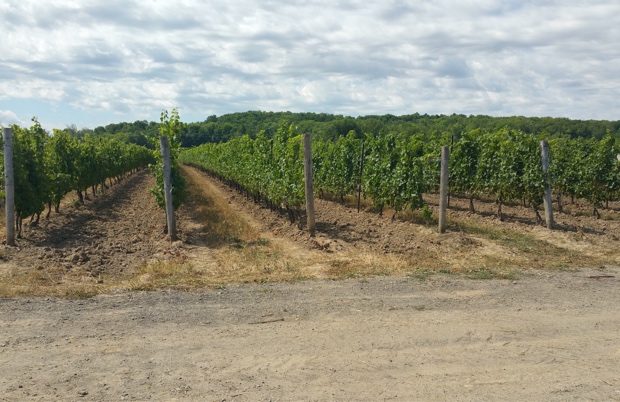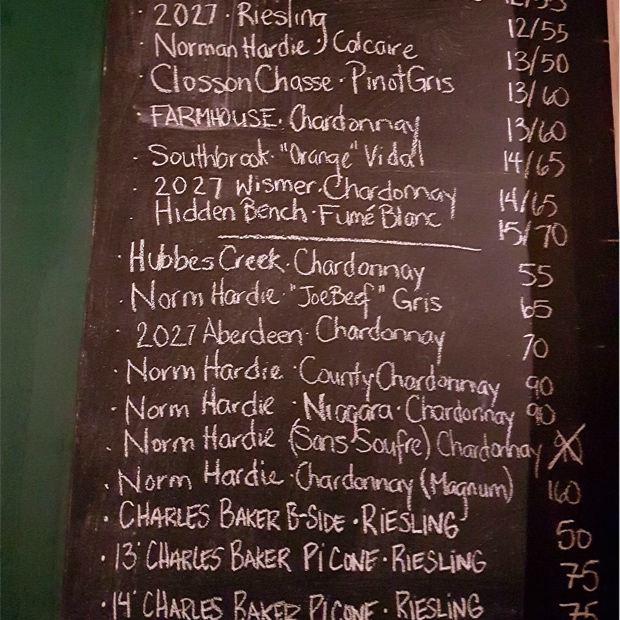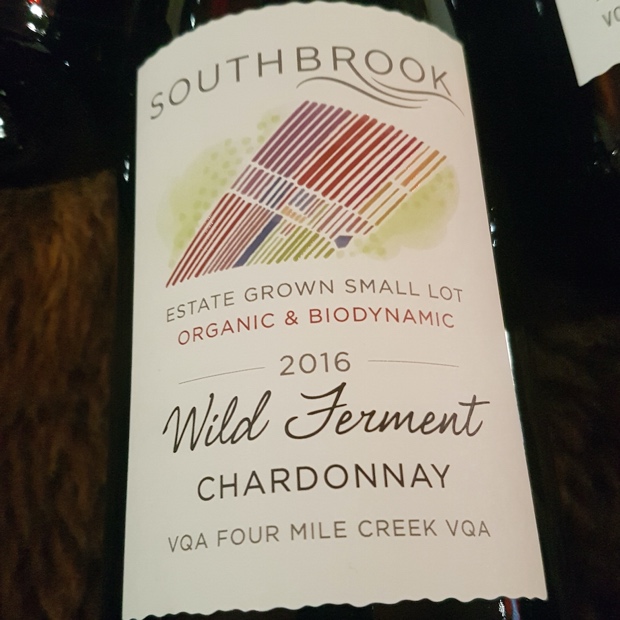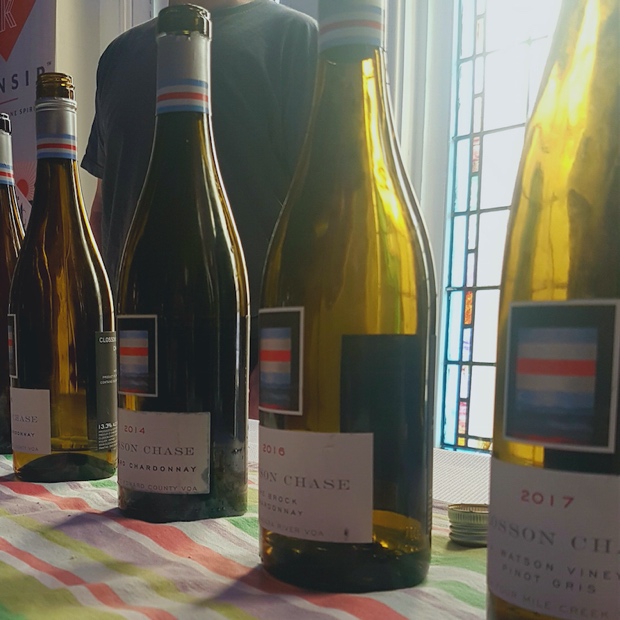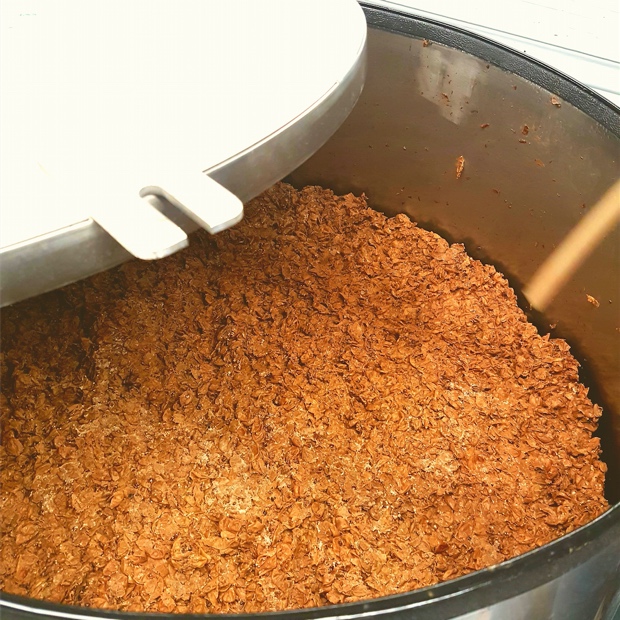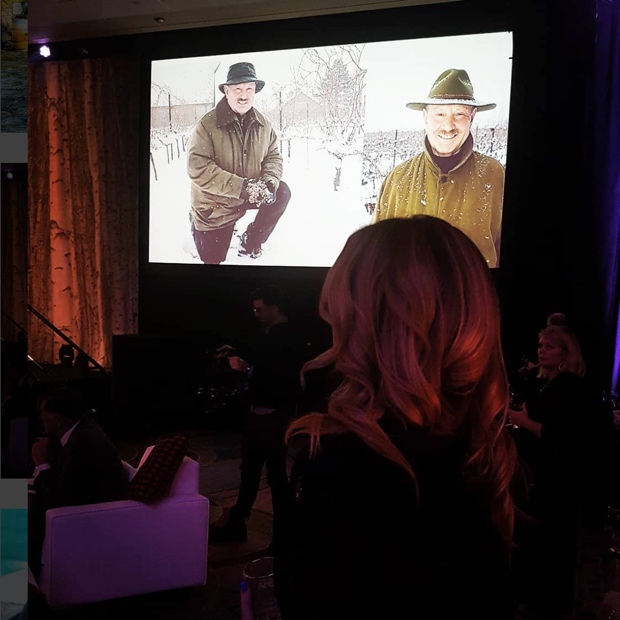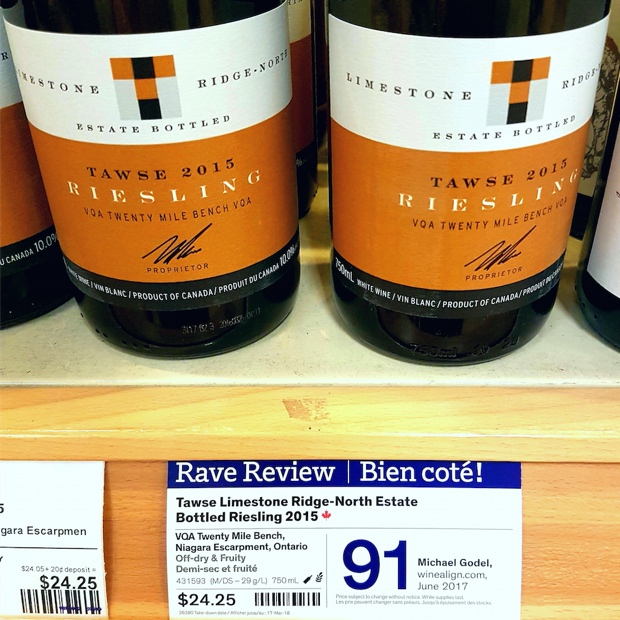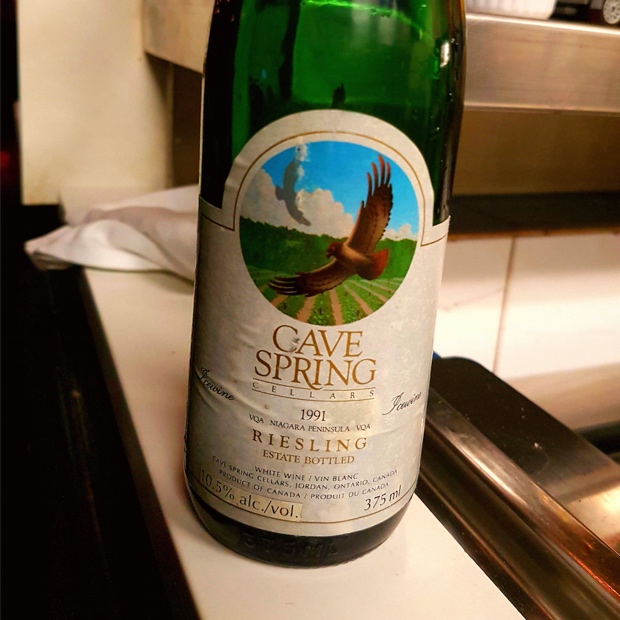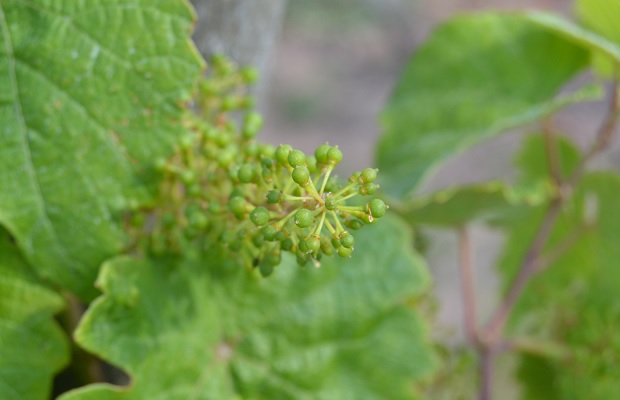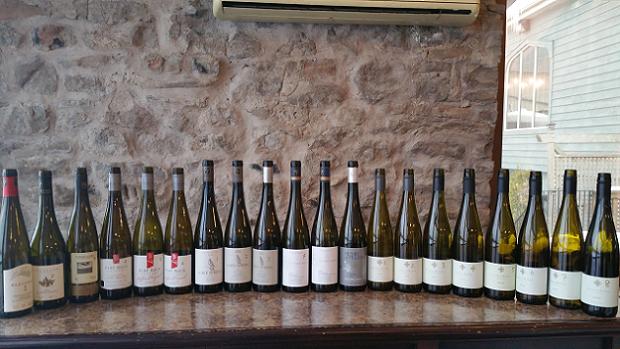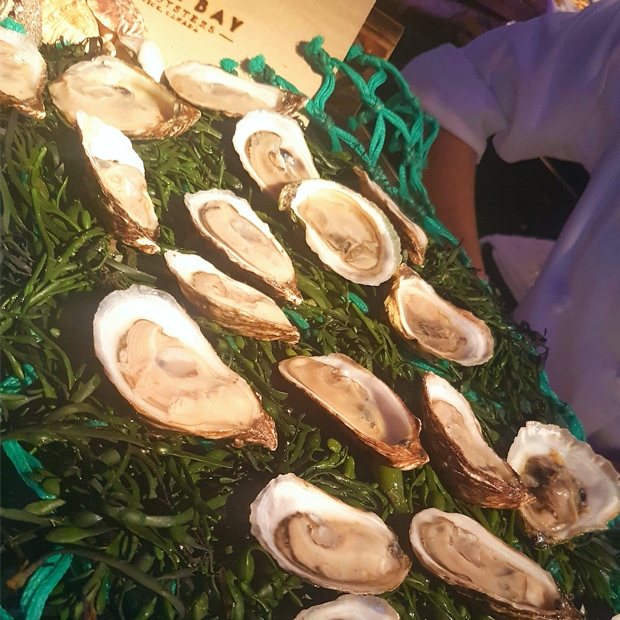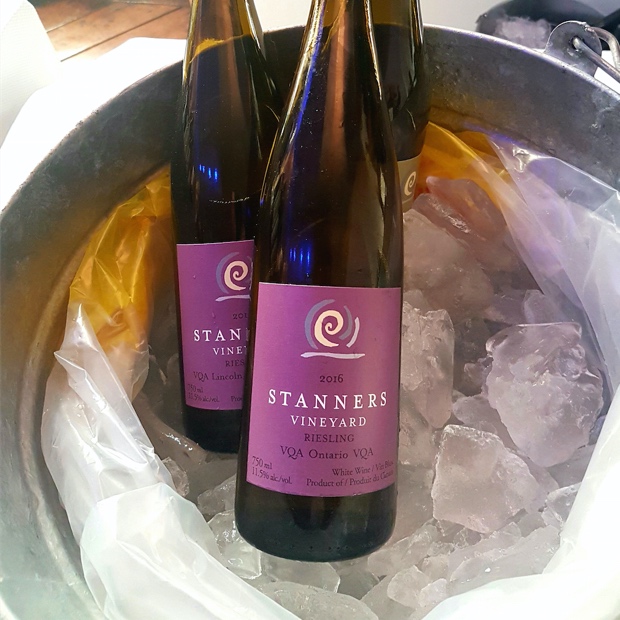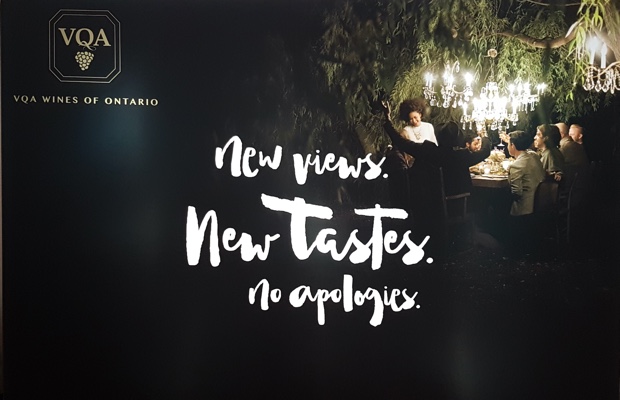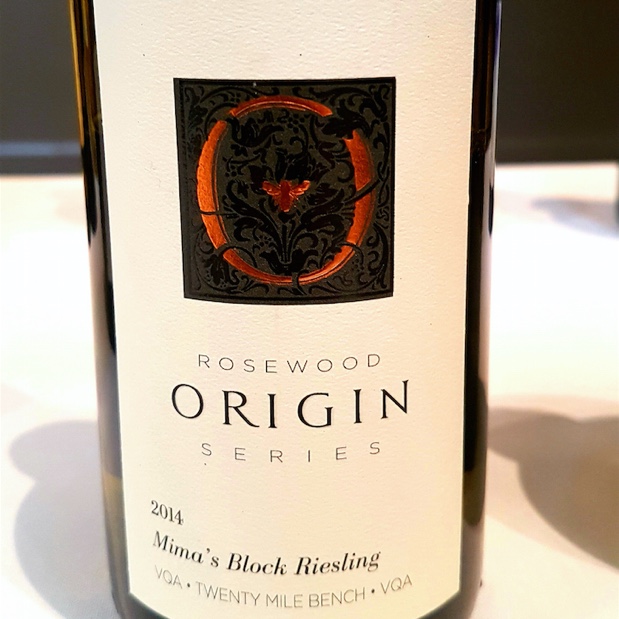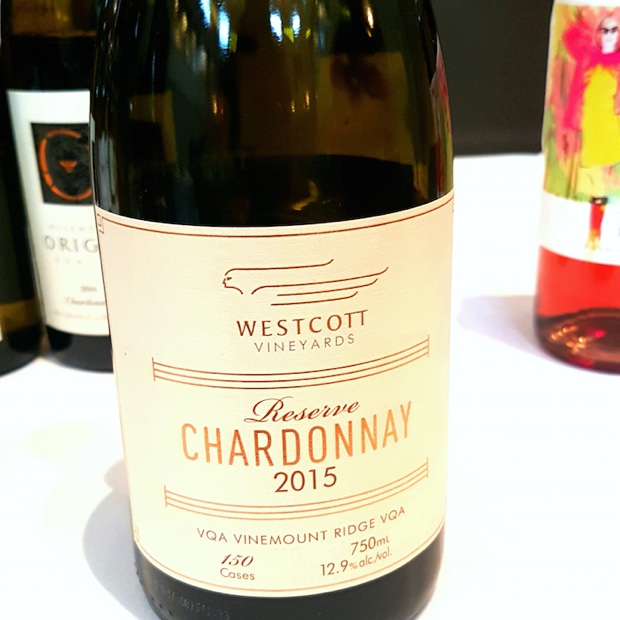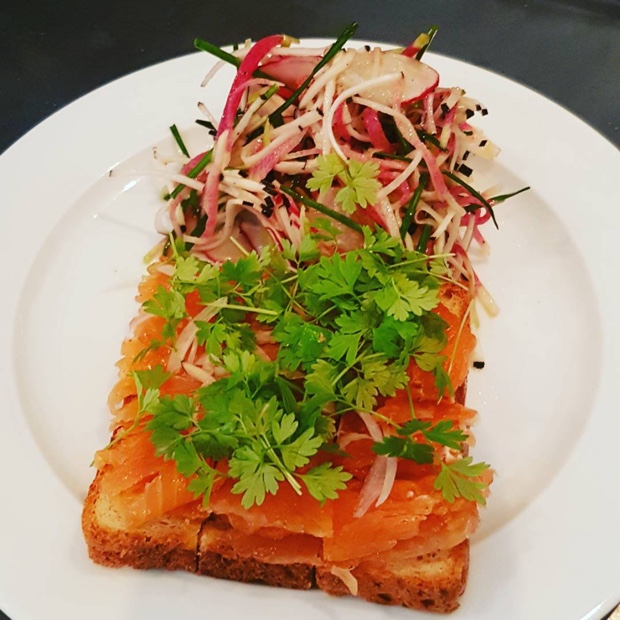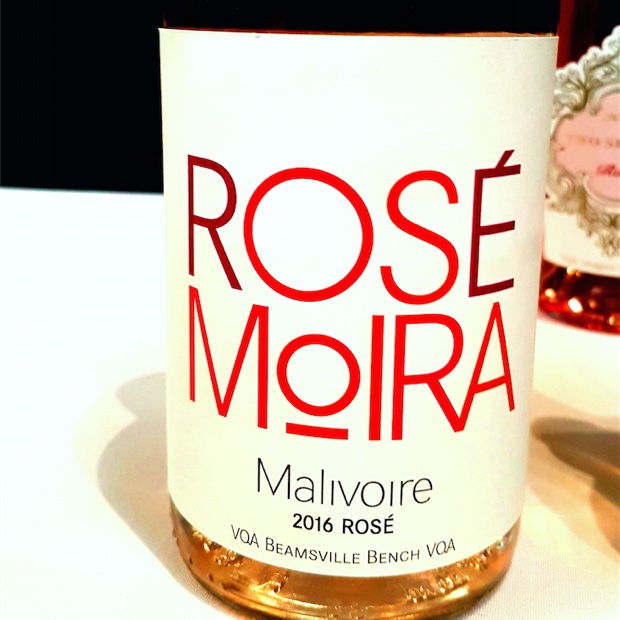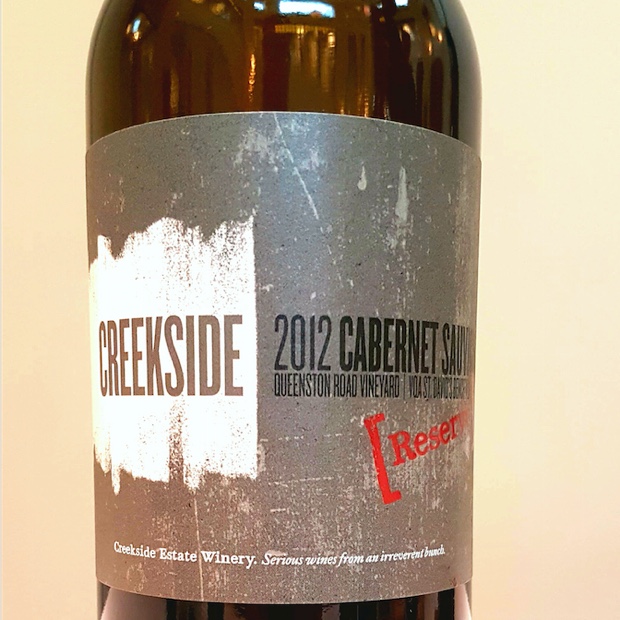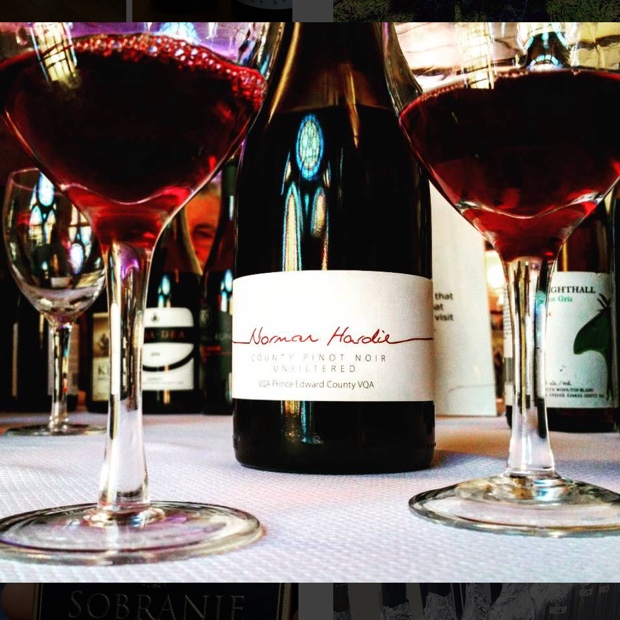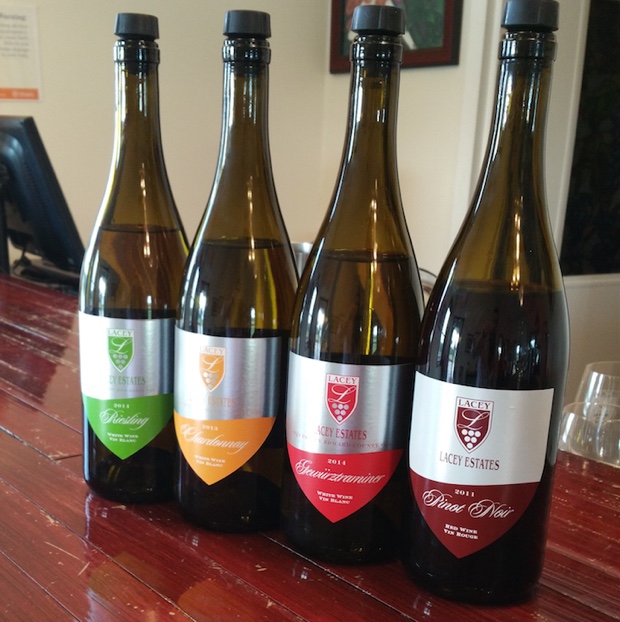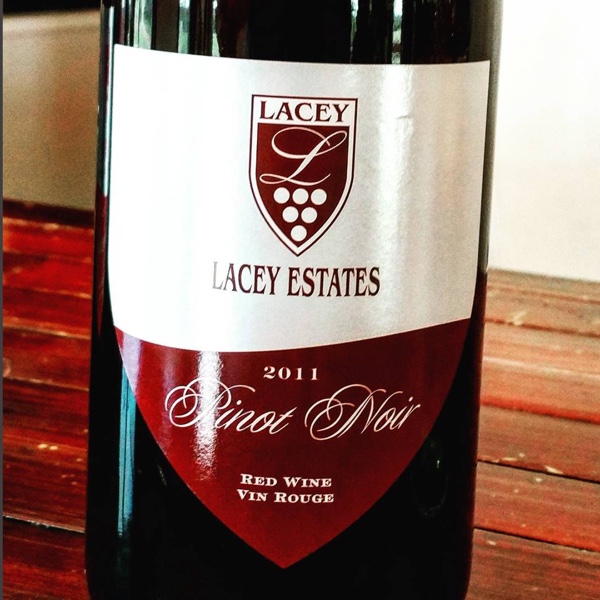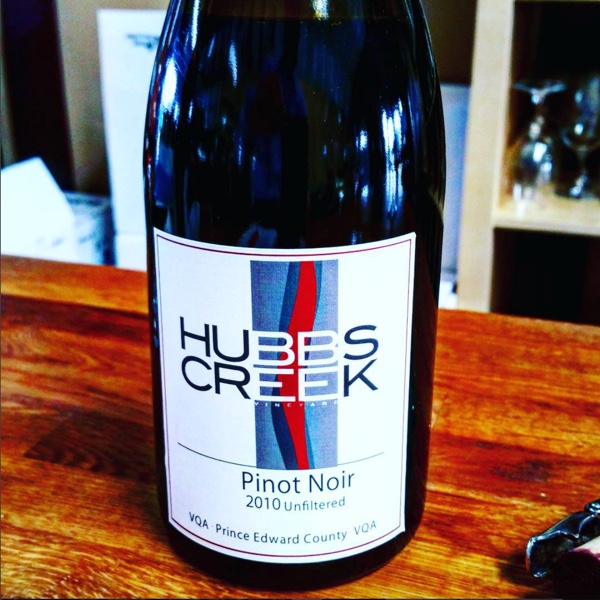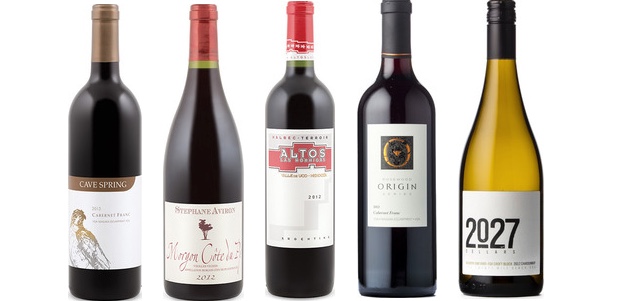
Chardonnay is one of the romantics. At the centre of cool belief are the fruits of isolated self-expression, of greatest importance and capable of discovering the highest truths. When chardonnay is treated with utmost respect it can commit to wines of sublime impulse that rearrange and execute the natural world in order to reflect its own preoccupations. Imagine chardonnay as a street scene, as a wine that might stumble into itself, of footsteps and flaring lights, of mystery beneath dreamy lamplight. It will always find the light. That’s what chardonnay does. Ontario is a place where people come to be intimate with the grape and while lovers of the cool stuff were unable to gather in July of 2020 or 2021 the movement has built momentum once again. In 2022 it was high time to get back to cool chardonnay.

School of Cool
Related – Niagara’s cool for chards
Yes, in 2021 visits are paid and wines are tasted, but there is no congress. In 2020, the writer leads a virtual thing. In July the School of Cool comes back to session at White Oaks Conference Resort where it belongs. The Wine Marketing Association of Ontario’s Magdalena Kaiser reunites the community and introduces the long-awaited keynote speaker, columnist at Decanter and World of Fine Wine Magazine. “Andrew Jefford writes about wine like no other. He is a poet and a legend.” She is spot on. The author of the recently published anthology called “Drinking with the Valkries” asks the audience to “imagine wine as music. It brings solace to our lives, sends us beyond ourselves, just like music. The potential grandeur of a wine is a factor of its milieu, but it’s silent without the human.” Jefford notes that because of a changing climate the instructions are changing. “The music of many places is beginning to slide out of tune…varieties are the litmus of the vineyard. The most useful and adaptable of instruments is the piano…and that variety is chardonnay. Ask for chardonnay and you’ll be played any old tune on the piano, all well and good, anodyne. Wines produced at higher elevations on stony soils tend to be more percussive. Quality of clay and aptitude of soil structure is just as important as limestone would be for chardonnay. It’s Proteus, if you will.”
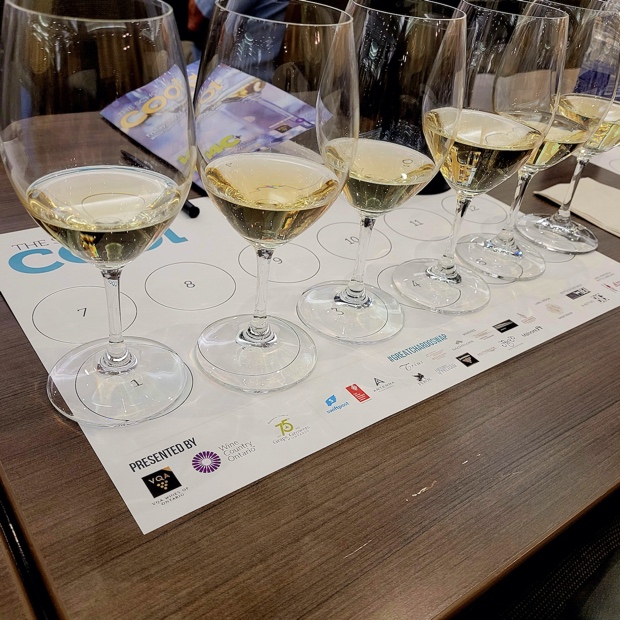
Andrew Jefford advises, tacitly implores his audience to listen. Pay attention. Take nothing for granted and understand that the parameters, goal posts and reference points are always changing. Chardonnay is indeed on the move and we must move with it or risk losing our rhythm, our mojo, our music. Practice makes perfect but innovation, cooperation and collaboration are imperative. Varietally speaking chardonnay may be the piano but other instrumentation is the requiem for completeness, satisfaction and glory. Chardonnay can achieve grandeur and continue to be the spirit of the sea, exist as past, present, and future, assume all sorts of shapes. To be regarded as a symbol of the original matter from which the world of white wine created. Chardonnay must always be protean, must always be on the move.
Related – A Chardonnay toast to Cool and the gang
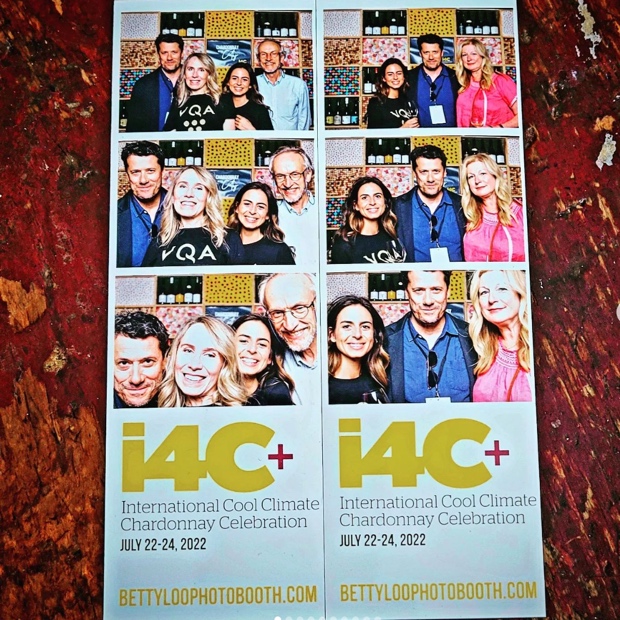
The Great Chardo Swap
Moderator Chris Waters takes control. He explains how the powers of Ontario minds devise a most devilish and transformative scheme. The “Chardo Swap” concerns chardonnay grape must from the 2017 and 2018 vintages. In reverse 300L from the west’s Montague Vineyard are sent to eastern Niagara winemakers and 300L of Thirty Bench chardonnay is conversely transferred to six winemakers in western Niagara. Until now the custodians of Montague fruit have only been the originals, like Karl Kaiser, Phillip Dowell and Bruce Nicholson. For continuity the juice provided is pre-settled. One of the wildcards is a matter of cross pollination, of sites and yeasts present on these grapes. So be it. Play and work with what you’ve got. The results are astonishing and compose a picture of subject matter as nature versus nurture. Which matters more? Read up on 12 wines made in reserve and decide for yourself.

Chardo Swap
Craig McDonald, Trius Winery – Thirty Bench Vineyard Chardonnay 2017
An ideal season to gift the rich and the restrained, right in the sweet spot between reduction and openly recognizable to getable purity. And yet it was “the summer we didn’t get,” tells Craig McDonald, a late season, cleaner, with more choices available, extended elévage in neutral wood. “I took the opportunity to push and stretch this into this kind of milieu.” Comes out more salty, stays clear of wild and woolly. Great approach and treatment of east side Bench fruit. Drink 2022-2025. Tasted July 2022.
Gabriel DeMarco, Cave Spring Vineyard – Montague Vineyard Chardonnay 2017
Bottled with and making full use of its laissez faire if highly useful lees, acting on behalf of and representing every variety’s profound catalyst. Wound tighter than many vintages of Niagara chardonnay, even at this four to five year mark. Chalk it up to the “other” fruit but also the oxidative winemaking and creation of a “flor” to bring cloudiness and texture. A definite fino brininess and yet less barrel effect (only 10 months) and ultimately transforming Montague fruit into something it’s never been known to do before. Also apposite to a Cave Spring chardonnay so in the end all cards that were on a table were flipped over for all to begin again. Drink 2022-2024.Tasted July 2022
J-L Groux, Stratus Vineyards – Thirty Bench Vineyard Chardonnay 2017
A case of the most experienced winemaker experiencing a fermentation that caused nightmares, perhaps because of a first try with new fruit, a season turned on its head, or both. But it came around and eventually complexity, “because of the thick coat of fur,” says J-L Groux. Bottled with its lees like a Stratus chardonnay would be but as a chardonnay it could not have resulted further from the maker’s truth. Drink 2022-2024.Tasted July 2022
Casey Kulczyk, Westcott Vineyards – Montague Vineyard Chardonnay 2017
Four chardonnay into the great chardo swap and this one begins to emit or rather implode within itself due to untracked, no cracks reduction. No shock that a Burgundian sensation grabs our attention because barrels are key and with a few years got behind also melted into the background behind the fruit. This is perhaps the wine that acts as it would were it made by a western Niagara producer in that the richness of clay and loam raised chardonnay meets its wood host for a double whammy effect. You really notice and feel it all. Drink 2022-2023. Tasted July 2022
Amélie Boury, Château des Charmes – Montague Vineyard Chardonnay 2017
Formerly Oliveira Vineyard, in Amelie Boury’s hands a sense of crispness and restraint. Quite fresh and laden with apple-terpene juice. A chardonnay straight to the point, lemon and lime, a style of evolution and not necessarily what winemaking would have done with this juice ten or more years ago. Drink 2022.Tasted July 2022
Thomas Bachelder, Bachelder Wines – Montague Vineyard Chardonnay 2018
If Montague Vineyard fruit could actually speak it might ask “why has it taken so long for me to fall into the winemaking hands of Thomas Bachelder?” Good coopers, the right toast and the pragmatic meets ambitious elévage transforms Montague chardonnay into something other. Something vivid and lyrical but mostly something linguistic and long in the tooth. “Montague Vineyard looms large in my life,” looking back at OG Le Clos Jordanne times, “not just because of lions inthe industry, Karl Kaiser and Donald Ziraldo, but because Montague is a really good vineyard.” Golden in every way, platinum, gem-like, gilded and if intense, also round. Thomas has coaxed oyster shell and a kind of Muscadet sea spray from this tract, something that has been noted at least one time in past iterations but now coming to the surface. Drink 2022-2024. Tasted July 2022

Chardo Swap Labels
Ann Sperling, Southbrook Organic Vineyards – Thirty Bench Vineyard Chardonnay 2017
Feels so much more ’18 than ’17, fresher and gilded, fruit and wood high, mighty and in synch. And yet the ’17 fruit has remained fresh with thanks to some early, slightly unsettled and oxidative juice used, opened then protected so that time would do little in these formative years. Fabulous western take on east chardonnay, balanced and expressed in a higher key of varietal life. Drink 2022-2025. Tasted July 2022
Shiraz Mottiar, Malivore Wine – Montague Vineyard Chardonnay 2017
From a Niagara-on-the-Lake neophyte, Shiraz Mottiar, who had never worked with fruit from that source. “All I know is that I had to be really gentle with the fruit. And I am adverse to risk. I had no understanding of Montague, how it was growing, or how it should be pressed. So for me, most of the winemaking had already been done.” Demure, taut, reserved and restrained. Lean aromatically speaking, green apple snap, backed up on the palate in a streak of linear and purposed focus. Things get a bit warming going down, a glow of charcoal though the effect is hypnotic, energy raising and ultimately nurturing. This is winemaking that makes pale chardonnay, phenolics dropped out, clean all the way. Just feels like an expression of place. Drink 2022-2024. Tasted July 2022
Nicholas Gizuk, Inniskillin Wines – Thirty Bench Vineyard Chardonnay 2017
Sap and resin, vanilla, wood all in, vinyl and tropical intentions. Tart pineapple, textural yet not creamy so finding its way with some poise after all. A chardonnay predicated of professionalism and flavour. Drink 2022-2023. Tasted July 2022
Emma Garner, Thirty Bench Wine Makers – Montague Vineyard Chardonnay 2017
Feeling the angles, juts, zigs and zags of this chardonnay, not to mention the tightly wound intensity. Crisp though also mighty substantial, Bench fruit for certain and of a clarity, placed under and scrutinized by the magnifier. Reveals site above all else so yes, an example of a winemaker that heeded place and let it be, or used what was available to make that happen. Making magic and magnifique with Montague fruit. Drink 2022-2025. Tasted July 2022
Fabian Reis, Ferox Estate Winery – Thirty Bench Vineyard Chardonnay 2017
So very caramel and vanilla, sweetly fruited and creamy, textural in the smoothest and fullest way. Spice cupboard for tartes, tatine and madeleine. Really quite reductive and almost a reserve, thickened, glycerol and what just feels like appassimento in addendum. Incredible richness gained from Montague fruit. Drink 2022-2023. Tasted July 2022
Lawrence Buhler, Henry of Pelham Family Estate – Montague Vineyard Chardonnay 2017
Of the 12 chardonnays in the great chardo swap this is the most reductive in that there is a shell that contains the fruit, part candied and part metallic. It’s a curious combination and solicits a response plus a focus of attention. The aspects of malolactic, textural in mouth feel and length are all fully formed and made longer by extension. So much wine and so little time but give it away and you will regret having acted with such haste. Drink 2022-2024. Tasted July 2022
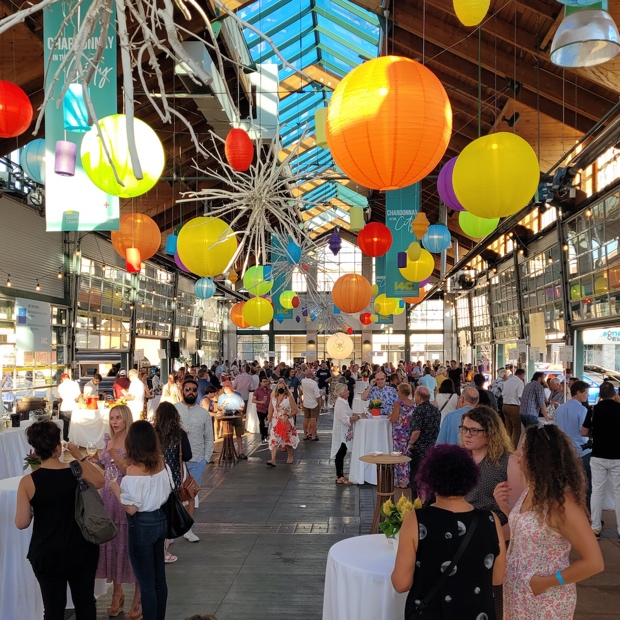
14C Friday night
Redefining Cool
Redefining Cool is much ado and to do about climate change. Winemaking is the proverbial canary in the cage, from cool latitude, altitude and attitude, devising an intellectual journey through a discussion on how to redefine Cool Chardonnay in 2022. “We are creatures of the interglacial…but we are flipping into a greenhouse world.” What does this means for winegrowers? Simply stated once again, “cool is on the move.” Six winemakers share their wines to help address and extoll the problems, virtues and answers toward this concern. Danielle Coetsee, Boschendal (White Wine Maker), South Africa; Clémentine Baud, Owner, Domaine Baud, Jura; Joseph Ryan, Winemaker and Vineyard Manager, Ernest Vineyards, Sonoma Coast; Nikki Callaway, Winemaker, O’Rourke Family Estate, Okanagan Valley, Lake Country, B.C.; Patricia Tóth, Winemaker, Planeta Winery, Sicily; Alex Baines, Winemaker, Hidden Bench Estate Winery, Beamsville Bench, Ontario.

Trisha Molokach, Godello and Magdalena Kaiser
Please scroll through below for notes on the wines they poured. In total there were 67 chardonnay tasted that I have now reviewed from i4c2022, Niagara’s Cool Climate Chardonnay Celebration. It was great to be back, with thanks to the cool concierge team led by the intrepid and tireless Trisha Molokach, the i4c22 Board of Directors and Educational Committee; Mark Torrance, Anne Weis-Pennachetti, Suzanne Janke, Magdalena Kaiser, Rob Power, Elsa MacDonald, Mary Delaney-Bachelder, J.J. Syers, Scott Wilkins and Belinda Kemp. Gratitude to all the Ontario member wineries, VQA Wines of Ontario, Grape Growers of Ontario and visiting Ambassadors of Cool.

Tasting Chardonnay
Ontario Chardonnay
13th Street Chardonnay L. Viscek Vineyard 2020, VQA Creek Shores
L. Viscek Vineyard does not give a reductive chardonnay so much as the über fresh kind in which transparency and site honesty are gifted at a serious premium. This is the green apple snap, bite and crunch one comes to expect, followed by a lees filled donut of a middle, no holes and a real Chablisienne mentality. Perhaps with a side of Loire like chenin roundness. Drink 2022-2025. Tasted July 2022

2027 Cellars Chardonnay Wismer Vineyard Foxcroft Block 2020, VQA Twenty Mile Bench
Still trying to figure out how a chardonnay from the Wismer Vineyard, Foxcroft Block can come to a consumer’s glass at $24.95 yet here we are and thankful for the gift. A rich and relatively buttery one, snap, crackle and green apple bite included, aromatic, flavourful and textured all the while. Caramel crunch as the skin of that apple and plenty of length to stay and drink a while. What’s not to be smitten by? Drink 2022-2024. Tasted April and July 2022
Adamo Sogno Unoaked Chardonnay Lore Vineyard 2020, VQA Four Mile Creek
Crisp, clean, unadulterated fruit with a je ne sais quoi floral lift with thanks to some musqué clone vines interspersed in the chardonnay of the 1980s planted Lore Vineyard in the sub-appellation of Four Mile Creek. A vintage to recite from, act on behalf of and celebrate the execution of a no wood varietal purity extraction. Not so much a lees affectation but high in citrus and knowable as a chardonnay with a single vineyard attachment. Drink 2022-2024. Tasted July 2022

Vanessa McKean and Renan Theilloux, Adamo Estate
Adamo Estate Chardonnay 2019, VQA Ontario
Adamo based in the Hockley Valley (Mono, Ontario) makes fine use of Niagara fruit for their ubiquitous chardonnay. Here a wine started by former OG winemaker Shauna White and finished by the dynamic incumbent duo of (winemaker) Renan Theilloux and (vineyard manager and winemaker) Vanessa McKean. Quite focused and tightly wound with notable lees sensations, though no overt wood make-up. Does slide into an invigorating sour edge and then warming, almost nurturing upon the finish. Drink 2022-2024. Tasted July 2022
Youthful, fulsome, a slight tinge or rise to high tone. White caramel and a terrific zing to the palate. Lemon and lime in many ways; curd, zest and with the tell-tale green apple bite. Shows the focus of examples alight as if by a single block. Impressive and woven, warmth and yet wild of sprit. Great potential here. Drink 2022-2026. Tasted blind at NWAC2021, October 2021
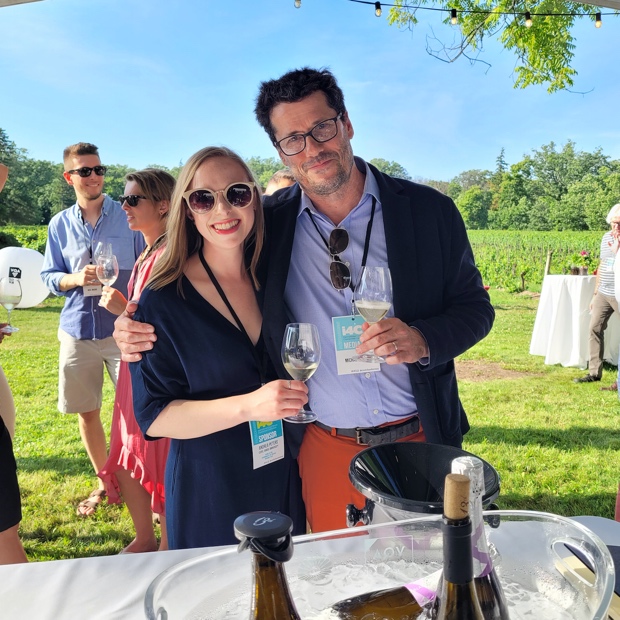
With Andrea Peters, Brock University
Bachelder Les Villages Bench Chardonnay 2020, VQA Niagara Escarpment
While Les Villages pinot noir draws from and abides by Niagara-on-the-Lake it is the dolomitic outcrops of the Niagara Escarpment for chardonnay where hope springs eternal out of this geological source. Micro-climate too, where a vacuum between the long, semi-steep slope at the edge of the plateau and the lake make for a wondrous place to grow chardonnay. The space between the two separated areas at different heights and the limey clay creates this two-part harmony of metal-elemental fruit and reductive, barrel spiced accents. Bachelder’s Burgundian conceptualization comes to fruition with abundance and the fabric of oblate making. Correct and unsparing, a good combination. Last tasted June and July 2022
“Les Villages” seems to be all in, fruit picked on the late side, wood complimenting with a wink and 2020 showing no signs of being left behind. Welcome to village chic, Escarpment style, full, luxe and round by design. Methinks Mr. Bachelder wants you to drink and enjoy this now, imagine a circle drawn through and around bench lands, all part of a community and a plan. This is life on “Le Bench.” Drink 2022-2025. Tasted April 2022
Bachelder Chardonnay Wismer Foxcroft “Nord” 2019, VQA Twenty Mile Bench
Nord is a cool firecracker of a chardonnay, crisp and sweetly volatile, white peppery sharp and given some air time, also luxe and suave across the palate. One of the fullest, most accomplished and complete wines in so many respects, fruit sources imagined as being picked from orchards of all shapes, ilk and sizes. Apples to peaches, nectarines to pears. Oh hail great fruit and how cool it breathes. Nord for Wismer-Foxcroft is clearly the shizzle, not merely the best or most popular but the source for Bench chardonnay that can handle the truths of reduction and flint struck realities. Drink 2022-2028. Tasted December 2021 and July 2022

Thomas Pennacchetti and Gabriel Demarco, Cave Spring Vineyard
Cave Spring Estate Chardonnay 2019, VQA Beamsville Bench
Sharp and taut, an intense and fortified chardonnay. Precise and pure, exacting the Escarpment with focus like few others at this level and so indicative of a classic 2011-esque varietal Niagara vintage. Such performance in crunch and mystery with creative juices flowing, dreams realizing and a future filled with even greater potential. Drink 2022-2026. Tasted July 2022
Cave Spring Chardonnay Musqué Estate 2020, VQA Beamsville Bench
A conversation with Thomas Pennacchetti and Gabriel Demarco wonders who has the most musqué planted in Ontario. No answer other than Cave Spring comes forth. Don’t sleep on both the intrigue and the significance of this chardonnay. Half the fruit is picked at 20/21 brix (early) and the other half in November. Acids and florals are each given their due. Skin contact time is 12-16 hours on both picks and so a “brownness” is pulled, “hard to get with musqué” tells Tom. A contract part terroir and part level of contact to achieve genuine character, but more so this candied orange peel aroma. In this warm vintage one could close their eyes and imagine friulano from Friuli, with thanks to the sticky wild yeasts leading to such an imagined result. Well also the bump in skin contact which also shows in the alcohol. As per the original statement: Intrigue and significance. This will age like old tokay. Drink 2022-2026. Tasted July 2022

Chardonnay in the Vineyard, Riverbend Inn
Château Des Charmes Chardonnay Paul Bosc Estate 2020, VQA St. David’s Bench
Laden with dichotomously soft terpenes and the squeeze of orchard fruit juices. Just the chardonnay facts and nothing but, ultimately a spirited and focused chardonnay as lean as it is fleshy and saline with no barrel unction to distract from the main concern. Last tasted July 2022
Takes no time at all to see this Paul Bosc Estate vintage of chardonnay by Château Des Charmes as a true crowd pleaser. It’s soft, delicate and supple on the palate. The oak is well integrated if sparsely adding any toast or nutty accents, with less than obvious salt and pepper seasoning. Even the vanilla is subtle, caramel too, the roundness just adding to the peaceful easy feeling. Hard to find more mildness and amenability in cool climate chardonnay. Drink 2022-2024. Tasted May 2022
Closson Chase Chardonnay The Brock 2019, VQA Niagara River
As a general rule the Brock is built upon K.J. Watson Vineyard fruit (in the Niagara River sub-appellation) with half seeing barrel time. For some reason it seems to show its oak more than the CCV and South Clos chardonnays albeit as a comfortably worn sweater in 2019. The scents are late summer, bergamot and then gardenia to tuberose. The bite is beneficial from out of this linear vintage and though there is a reductive quality the general outlook is aromatics above texture. Brock is a fine entry level chardonnay representative of Closson Chase working with Niagara fruit. Drink 2021-2023. Tasted October 2021 and July 2022
Closson Chase Chardonnay South Clos 2020, VQA Prince Edward County
More than 20 years of vine age, acumen and wisdom are the gain of a South Clos chardonnay and winemaker Keith Tyers is surely more than comfortable making it happen. Dry and warm vintage shows in the dried herbs, almost fennel to pollen dusting on the nose and a stoic presence in almost every respect. Would not go so far as to call this a taut and unforgiving chardonnay, nor is it particularly flinty or reductive. What it shows is utter purity and linearity, a platinum gemstone sheen and shine, controlled power and so much more packed away in reserve. The flavour bursts and energy spurts indicate just how long this will travel. Top, top. Drink 2023-2028. Tasted July 2022
Cloudsley Chardonnay Twenty Mile Bench 2019, VQA Twenty Mile Bench
A mix of Wismer fruit, part Wingfield and part Foxcroft, indigenous ferment and 18 months though only 28 per cent in new wood. Solid pH and also acidity numbers, more fruit and flesh, less flint, tension and spin. The accessible chardonnay for all to gain insight into the Twenty Mile Bench and how it raises these beautiful blancs. Length is outstanding in 2019. Drink 2022-2025. Tasted July 2022

Cloudsley Cellars Chardonnay Foxcroft Vineyard 2019, VQA Twenty Mile Bench
Winemaker Adam Lowy likes to get at it, especially with Foxcroft fruit out of the Wismer Vineyard. And so aging is for 18 months in 50 per cent new barrels for a truly flinty, flexed and tense chardonnay. Vines are 23 years of age at this harvest and their potency meeting potential for balance seems poised at the apex of excellence and understanding. So close to pay dirt now and yet for a Cloudsley chardonnay, perhaps so far away. Wait just a wee bit. Drink 2023-2027. Tasted July 2022
Domaine Queylus Chardonnay Tradition 2020, VQA Lincoln Lakeshore
A wild ferment and approximately 20 per cent new wood. Textural vintage for the Tradition, viscous and really very fluid, brioche imagined as a sweet liquid and also a liquor of buttery spice and botanicals. Quite a rich and developed chardonnay, product of a warm vintage resulting in ripe returns. Drink 2022-2024. Tasted July 2022

Domaine Queylus Chardonnay Réserve Du Domaine 2020, VQA Niagara Peninsula
Much more intensity and higher ceiling of promise comes from the next level Réserve du Domaine, rising away from softness and up to a more rigid, biting and cracked spice precipice. Sharp at its most vital moments and vintage rich at times when generosity is warranted. Does it all really, with style and warmth. Still there is more nature than nurture in a chardonnay allowed to simply make it happen. Drink 2022-2026. Tasted July 2022
Ferox Estate Chardonnay “Vintages,” VQA Niagara Peninsula
Wholly unique aromatics, almost Icewine in favour, dense and intense with as much metallics as there are exotic fruits. A non vintage blend, also unusual but for reasons vintage related. And so this runs from 2016 to 2019, a blend of sites as well, warm moments and then turning cool, of yellow fruit from banana to pineapple and mango, then greens, in apple and herbals too. It’s pretty complex stuff if admittedly hard to wrap a brain about. Drink 2022-2024. Tasted July 2022

Henry Of Pelham Cuvée Catharine Carte Blanche Estate Blanc De Blanc 2016, Traditional Method, VQA Short Hills Bench
Never gets old does it? It’s like Christmas every time a new vintage of the Cuvée Catherine is opened, always with great anticipation and wonderment for what the most recent disgorgement will bring. In this case intensity juxtaposed by harmony in ways only the Carte Blanche can and with Niagara’s greatest fizz consistency. That’s the thing really. The bar and the pressure was set high long ago and this sparkling wine meets it, failing nothing, equally so, year in and year out. The 2016 is no exception with perfectly equanimous apple fruit and fine structural fortification. Just a delight, sturdy, openly fragrant, delectable and succulent. Resounding yes, as per expectation and adjudication. Drink 2021-2026. Tasted November 2021 and July 2022
Henry Of Pelham Estate Chardonnay 2020, VQA Short Hills Bench
Whole bunch pressed, barrel fermented with a cocktail of yeasts, one third new French oak and some further older usage ones as well. So perfectly middle of the road, proper and accessible, well managed by acids and really just the right and quick answer to what is Niagara and even more specifically Short Hills Bench chardonnay. Drink 2022-2024. Tasted July 2022
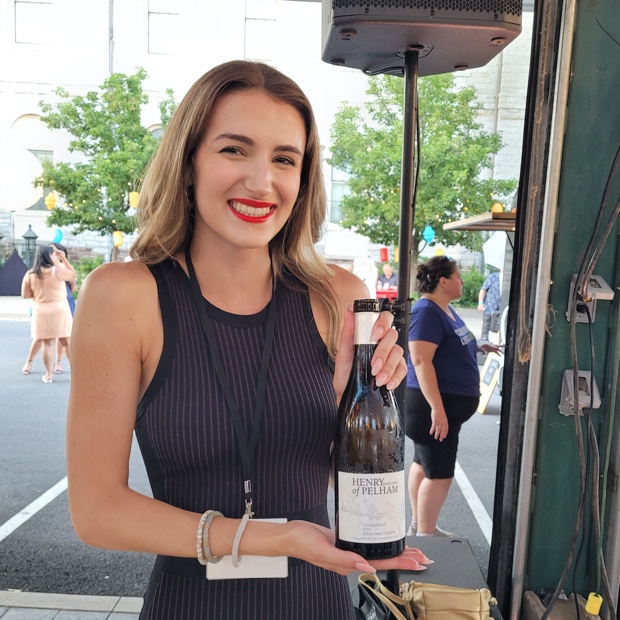
Next generation Speck, Henry of Pelham Estate Winery
Henry Of Pelham Speck Family Reserve Chardonnay 2020, VQA Niagara Escarpment
Crisp and über clarity from the first nose and nary a moment of reduction, if any. Richness accumulates with aeration as the wood gains olfactory traction. Need to test the palate forces to know what goods and treasures lurk in this oh so young and impressionable chardonnay. Track record is more than a mere incendiary aspect of the Speck Family Reserve capability and knowing airtime and chronology are essential towards determining the future, well, you get the apple orchard and white caramelizing drift. So youthful and yet there is plenty of time. Drink 2022-2026. Tasted November 2021 and July 2022

Hidden Bench Chardonnay Felseck Vineyard Unfiltered 2019, VQA Beamsville Bench
Felseck sits at 37.59 North, a latitude working in cohorts with an escarpment’s nook and the lake laying low below. Last tasted July 2022.
Don’t be fooled in thinking this is merely a reductive and green glade example of cool climate chardonnay. Solid and expected? Perhaps and yet also crunchy with shots of lemon and lime. Nothing out of sorts, tight enough to at times act hard to get and even anti-complex. There are secrets inherent in a cool climate world where so many chardonnays are made this is as interesting and innovative as the first. Last tasted blind at NWAC2022, June 2022
Tasted as part of an #14c21 seven year vertical Felseck Vineyard retrospective. No stirring, “I don’t like bâtonnage,” tells winemaker Jay Johnston, “unless I’m trying to get a wine to dry.” Never mind the lees aeration or the emulsification because texture in this ’19 is extraordinary to behold, gliding across the palate with Bench orchard fruit cleverness, penetrating perspicacity and juices running through unblemished flesh. Tighter and taut than ’18, while seemingly improbable but here yet unwound, far from the pinnacle at which point full expression will surely ache to be. The ’18 may be a beautiful thing but the ’19 is structured, manifold in destiny and ideal for those who know, or at least think they do. Drink 2023-2030. Tasted July 2021

With Magdalena Kaiser, Chardonnay in the Vineyard
Icellars Chardonnay Icel Vineyard 2019, VQA Niagara-on-the Lake
Similar to 2017 at 13.5 per cent alcohol yet more phenolic and also in that sizeable frame of inclination that is captured in the full, ripe and potently efficacious 2018. This just feels like the best of both worlds in chardonnay, at once cream centred and then juxtaposed by just a bit of back bite. A lovely and somehow powerful wine of wine contrary forces in push and also pull, ying and yang, punches and then receives. Hard not to see everyone loving this chardonnay. Drink 2023-2026. Tasted July 2022
Icellars Chardonnay Icel Vineyard 2018, VQA Niagara-on-the Lake
And then ’18, which was a warmer year in this sub-appellation and a chardonnay more reductive but also bolder, fulsome and phenolic, feeling a bit boozy (only 0.3 higher than ’17 and ’19) and definitely riper, even feeling sweeter. Was inoculated as the yeast cultures have not quite established in the cellar. Plenty of phenolics here, raising the bar all around. More age-ability to be sure. Last tasted July 2022
Devilishly rich with full compliments of berries and barrel working side by each to create this tropical fruit split that reaches the heights of chardonnay decadence. Runs the gamut from pineapple to green apple and though it does not snap back there is a fine elasticity to how the texture stretches and then releases. For those who like to strike it rich. Drink 2020-2024. Tasted October 2020
Icellars Chardonnay Icel Vineyard 2017, VQA Niagara-on-the Lake
Favourite wine of Adnan Icel’s wife Elif, a fan of Bourgogne and made by (12 rows) planted on the property in the beginning in 2012, followed by eight rows in 2014. Always hand-picked, whole cluster pressed. As for 2017, fermented 12 months in 500L French barrels. Malo in barrel, stirred and two years in French oak kept on lees with no racking. A multitude of flavours, now fully emerged, developed and gifting to the very maximum. Showing so well. Last tasted July 2022
From Niagara-on-the-Lake and 2010 founder Adnan Icel, a rich throttled chardonnay barrel fermented in 500L French oak puncheons, lees stirred for six months, then aged 12 months more. Tells us to expect rich, opulent, creamy and highly flavourful chardonnay. That it is. Flint-struck if only momentarily, correctly reductive in the sense of fresh encouragement combined with the Niagrified creamed corn, again, if only during this persistently youthful state. Maybe causes a note of bewilderment for some but stay with this wine, give it a year’s time and all will be worth it. Will drink in optimum and designed fashion eight months from now and for two-plus years thereafter. Drink 2021-2024. Tasted July 2022
Inniskillin Reserve Chardonnay 2020, VQA Niagara Peninsula
Hard to ignore the Niagara peach character of this fruit in chardonnay that’s all about this and not really how residual oak might want to linger within. There are old blocks of chardonnay available and this is from Block 210, planted in 1993 through 1996. The peach leads to harder fruit drugs, golden pineapple and guava, some lees feel, plenty of nutrients and that oak then becomes one of low and slow accumulation, neither a piqued nor toasted. Well made indeed. Drink 2022-2024. Tasted July 2022
Jackson Triggs Entourage Grand Reserve Blanc De Blanc Limited Release 2017, VQA Niagara Peninsula
More than a moment of reduction requires agitation and then the apple/pear orchard fruit is released. More than lees affected blanc de blanc, ostensibly chardonnay and seemingly the first of its kind for J-T. More scintillant style than either the Brut or the sauvignon blanc, direct, linear and shedding a lovely lemon pith bitter set of flavours. Almost woolly for sparkling, like Loire or some Alsace and very long. Drink 2022-2025. Tasted July 2022
Kin Vineyards Chardonnay Carp Ridge 2019, VQA Ontario
Kin close to Ottawa is a fascinating species of Ontario wine where pinot noir and this chardonnay grows atop glacial till, clay loam over grey limestone of the Hazeldean Fault. Low to moderate alcohol (12.5 per cent), dry as the desert and expressive of the coolest of cool climate acidities all add up to something arriving this way with intensity through integrity. Green apple bites are what they should imagined to be in chardonnay and rusticity is only a state of mind. Must be tasted more than once, to appreciate the credence and join the new frontier seance. Drink 2022-2025. Tasted July 2022
Leaning Post The Fifty Chardonnay 2020, VQA Niagara Peninsula
I believe it was April of 2017 when I first tasted the inaugural (2015) vintage of Ilya Senchuk’s The Fifty, a chardonnay that ferments in barrel but then transfers to finish up on lees in stainless steel. Not much has changed in five years but the wine has tightened and like a rare shelf fungi it is at its freshest finest when the teeth-like hymenium pores are barely visible. Senchuk bottles at precisely this point and that is something he has gotten really good at over the years. This chardonnay is remarkably precise, takes nothing for granted and delivers a layered experience in which more than one vineyard and sub-appellation contribute to the greater good. Might very well be the best one made of the six to date. Drink 2022-2024. Tasted June and July 2022
Leaning Post Chardonnay Senchuk Vineyard 2019, VQA Lincoln Lakeshore
Ilya and Nadia Senchuk’s home playground is a matter of grey clay in alluvial soil with river stone, that is in terms of the vineyard and the winery’s back (or maybe front, as if it were a lake) location. The Winona-Grimsby couple are just starting to really understand, forge sensorial connections but even more so make their terroir relatable to the world. Even more piques and white peppery jolts than Wismer and Grimsby Hillside Vineyard combined, intense emotion and a crisp freshness that’s both hard to explain and also impossible to look away. Textural chardonnay that on the surface is nothing at all like Foxcroft or GHV. Come back again and again for five to seven years. My what a beautiful chardonnay world this is. Drink 2023-2028. Tasted June and July 2022

Le Clos Jordanne Chardonnay Jordan Village 2020, VQA Niagara Peninsula
The second iteration of the Village chardonnay is again a parcel amalgamation of Twenty Mile bench Le Clos and Claystone vineyards along with that of Talon Ridge in the Vinemount Ridge. If this is to be considered another standout vintage then the fact that early malolactic, sluggish ferments and moderate alcohol must all come together with a seamless whoosh. Another year in the triumvirate averaging of vine age puts less pressure on balance and more on concentration, here resulting in true LCJ favour. So much furthered collective warmth is 20’s call to body and then mind takes over with succulent bites and crafty control. Should settle by the spring of 2023. Drink 2023-2027. Tasted July 2022

Glenn Symons and Chris Thompson, Lighthall Vineyards
Lighthall Chardonnay 2019, VQA Prince Edward County
Unique even for Prince Edward County chardonnay in a stainless meets barrel ferment with the latter a combination of new and third use 500L vessels. Warmer and fleshier than 2018, higher in alcohol by what feels like at least a per cent. Defines crisp pear, washed Phillipston Road cheese rind and crunchy bits of oyster shell but also salted white-spun aureate for local chardonnay. Pairing paraphrases aside this is made for the cheese board, a dozen oysters and a really good pretzel. Drink 2022-2025. Tasted July 2022

Lighthall Chardonnay 2018, VQA Prince Edward County
Mon dieu what a completely different animal than 2019, leaner, saltier and all about the oyster. No real orchard fruit flesh nor pith neither. Zest perhaps though the tight nature, lean disposition and more neutral flavours put this in wholly different regard, Alcohol is a mere 12.8 per cent (as compared to a minimum 13.5 in 2019). And so find some fattier fish (like halibut) and drink up. Drink 2022-2023. Tasted July 2022
Malivoire Chardonnay Estate Grown 2020, VQA Beamsville Bench
“Estate” raises purposed and propping acids in 2020 with somewhat maintained if lessened pH (all as compared to Moira) if for no other reason than because (85 per cent) Moira fruit is accented by Mottiar and Estate. Comes away crisp, brisk and frisky, contagiously spiced by galangal and ginger, tastes like sweet lime without the sugar. Has been in bottle just under a year and while the quaff factor begin to run high it may be suggested that the best moments are still to come. Picking took place over three weeks in September and so the “stacked” cuvée makes for an omnipresent happening, variegated though contiguously seamless too. Drink 2022-2025. Tasted July 2022

Malivoire Chardonnay Moira 2020, VQA Beamsville Bench
“Broad and tentative swipes” be done and so consistency thy name is Moira, or at least a vineyard’s persistence is manifest in a chardonnay that keeps the faith and the fluid movement of flavour alive. Lovely showing nine months on, window opening or at least now ajar to crawl through and feel the Beamsville love. Last tasted July 2022.
Fun phantom power spirit on the aromatic front, perfumed to the hilt, creamy fruit and vanilla, well positioned and working as one. Quality if too youthful at present to fully appreciate. Causes a tragically hip perception of middle of the road but with an intention so great the future will change everything. “Don’t tell me what the poets are doing, on the street and the epitome of vague…Got to make it, that’ll make it by swimming” Drink 2022-2025. Tasted blind at NWAC2021, October 2021

Shiraz Mottiar, Malivoire and Dan Sullivan, Rosehall Run
Malivoire Chardonnay Mottiar 2019, VQA Beamsville Bench
“I always hold my pH down below 3.2,” which is accomplished by understanding your vineyard, tells Shiraz Mottiar. “And you have to know (not only when but also) how to pick.” Which was October 5th in 2019 and so acidity remains high and persistent, fruit in a holding pattern and structure a real thing. More place resolved and revealed, vines clearly having well arrived into their state of balance and grace. As fine a chardonnay from the Beamsville Bench in this vintage as you are likely to find. So much more worthy than first considered. Last tasted July 2022
Nicely, allegedly and properly reductive, especially as it pertains to chardonnay, a bit closed but nearly ready to spread its wings. Quite the fruit juicy tang, green apple bite and cool climate, sparked and piqued style. The sharpness of flavours works well with the wood and integration is just around the corner. Look for that moment in the Spring of 2022. Drink 2022-2026. Tasted blind at NWAC2021, October 2021

On Seven The Pursuit Chardonnay 2018, VQA Niagara On The Lake
Seven acres, thus the name, in the hands of Vittorio de Stefano, “and a project paramount to wanting something sustainable that can compete at the international level and standard.” The vineyard is five acres and the property now 15.5. Planted half each to chardonnay and pinot noir, all organic. Bourgogne is the impetus, Niagara the goal. The genesis of planting decisions dates back to 2009, high vigour rootball SO4 rootstocks and clones finally acquired in 2014. Now at seven years of age the vines are ready to rock. A place of science, with oenological consultant/winemaker Peter Gamble at the fore and wines of minimalist approach starting out in reductive tendency, then finishing with longevity defining acidity. Richness and intensity meet at a general Côte d’Or vortex but in the end Niagara lake-proximate flesh and tension are the true meeting point. There is a distinct flintiness (and unlike other flinty chardonnays) but also a caramelization of high delectability and flavour. Vim and vigour, vivid and 20 per cent new oak over three years to gain such favour. Exotic too, with wood contributing to the extract, but surely essential trace elements; manganese, iron and calcium of causation allowing the minerals to make themselves heard. Intriguing wine if only at the beginning of a long story yet to be told. Only 82 cases made. The goal as the vines mature will be 800. Drink 2021-2024. Tasted July 2021 and July 2022

Lydia Tomek, Ravine Vineyard
Ravine Vineyard Reserve Chardonnay 2019, VQA St. David’s Bench
Fully glazed, honeyed and barrel affected to an nth degree. Unctuous, caramel and pineapple, a huge chardonnay expression that means business and is surely priced accordingly. Matters not where it’s from because the wood is everything here. That said there is plenty of substance, namely fruit to carry the weight. For a specific crowd that will enjoy the experience, west coast style of certain recurring eras. Drink 2022-2024. Tasted blind at NWAC2022, June 2022 and at i4C22, July 2022

Rosehall Run Ceremony Estate Grown And Bottled Blanc De Blancs 2017, VQA Prince Edward County
More than ample and credible chardonnay vintage, especially for sparkling with thanks to a longer season. There is some lees lounging in 500L puncheon which, coupled with the further 42 months post tirage adds up to complexities on charts and those not able to be found on charts. Really toasty bubble, invigorating and yet also of a calming or at least nurturing stance. Like biting into a fizzy apple and having it tingle in your mouth, followed by a jettison of herbal, citric and wild forest edible flavours. Even a fruity chanterelle. Devilish stuff once again from Dan Sullivan. Drink 2022-2026. Tasted July 2022
Rosehall Run Chardonnay JCR Rosehall Vineyard 2019, VQA Prince Edward County
Yet another stellar chardonnay from Rosehall’s JCR Vineyard and coupled with a most excellent varietal vintage the stars, Strats and stats are clearly aligned. Behold an increasingly accomplished wine that reveals the breadth and depth of this vineyard. It has been and continues to be made in a genre to gender bending approach, fusing the alternative with the electronic and achieving a rare balance of critical and commercial success. Dan Sullivan’s JCR, like St. Vincent is one to sing “I do a dance to make the rain come. Smile to keep the sky from falling down down down down. Collect the love that I’ve been given.” Marry Me JCR? Drink 2022-2024. Tasted April and July 2022
Southbrook Estate Grown Small Lot Wild Ferment Chardonnay 2020, VQA Four Mile Creek
As intense a grab of fruit, barrel and spice as ever in an Ann Sperling chardonnay. What with her classic handling whereby slightly unsettled juice receives some early oxidation, followed by an über protected elévage to bring it forward and into a now fruition. As a result drinks well right away but we known it will stall and little will change for the next few years. More chew than crunch, sweet and sour, encouraging and demanding at the same time. Drink 2022-2025. Tasted July 2022
Estate chardonnay, six years on the lees, traditional method. Generally speaking an inconsequential one gram of dosage, disgorged in February 2021. The other OG for Stratus based on the team’s research and development trials first executed back in 2006 and 2007. Another elevated autolytic example, not as toasty as ’13 but more textural and lees-directed. Further down the road to complexity of flavour washes, swarths and swaths as well. A woollen one, leaves a salve as it graces the palate and lingers long after the fluid thrill is gone. Everything is here, everyone should want some. It’s the Devil and Mr. Jones. Lucifer on the sofa. “There’s juju raining down all around you, yeah. Makes you heavy mental. It makes you tense.” Spoon-feed it to me when I can no longer do it myself. Drink 2022-2026. Tasted July 2022
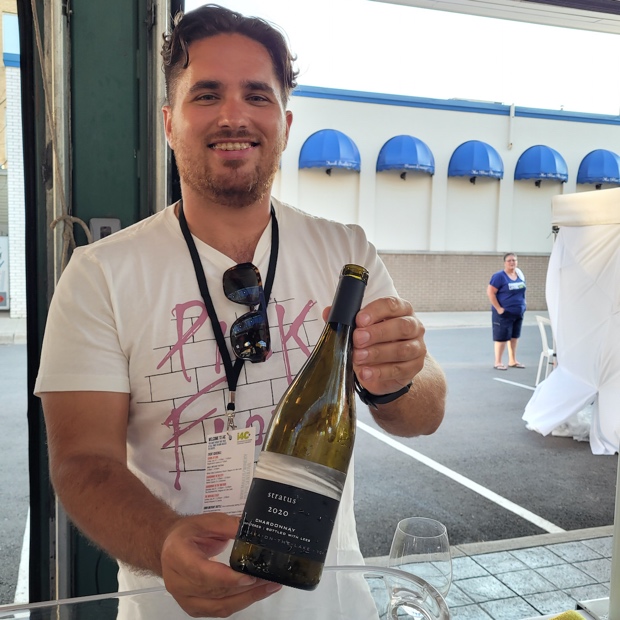
Dean Stoyka, Stratus Vineyards
Stratus Chardonnay Unfiltered Bottled With Lees 2020, VQA Niagara-on-the Lake
As with so many 2020s the virtuous exercise patience during a vintage of sluggish ferments. Ask winemaker Dean Stoyka and he’ll tell you “it’s all about canopy.” In a hot and arid season chardonnay is kept “beneath a sombrero effect,” to avoid sun scorching, to access dappling but avoid 10am to 3pm sun. This practice is not new to the team at Stratus but they are truly now in the “balanced zone.” Chardonnay is a matter of (60 per cent) wood, 30 white clay and 10 stainless steel. This and the lees make for a cloudy if ducky wine of downy texture and very refreshing feel. A whole lot of R & D for which the maker and the consumer are loving the results. Last tasted July 2022
Next vintage up for this singular Niagara Lakeshore chardonnay meets expectation where fruit substance and quality lees get to making some magic from out of the auspices of an hermetically sealed environment. Love it when chardonnay acts reductive without being either obvious or blatant, instead going about its high quality business like the natural professional it knows it can be. Whispering caramel and subtle smoulder set the bar high and as chardonnay there is this perching upon a gilded golden wire, in regal, confident and self-secured style. Most excellent rhythms, beats and tones set this up for a promising run. Drink 2023-2027. Tasted April 2022

Stratus Blanc De Blancs 2014, VQA Niagara-on-the-Lake
Estate chardonnay, six years on the lees, traditional method. Generally speaking an inconsequential one gram of dosage, disgorged in February 2021. The other OG for Stratus based on the team’s research and development trials first executed back in 2006 and 2007. Another elevated autolytic example, not as toasty as ’13 but more textural and lees-directed. Further down the road to complexity of flavour washes, swarths and swaths as well. A woollen one, leaves a salve as it graces the palate and lingers long after the fluid thrill is gone. Everything is here, everyone should want some. It’s the Devil and Mr. Jones. Lucifer on the sofa. “There’s juju raining down all around you, yeah. Makes you heavy mental. It makes you tense.” Spoon-feed it to me when I can no longer do it myself. Drink 2022-2026. Tasted July 2022
Stratus Chardonnay Unfiltered Bottled With Lees 2017, VQA Niagara-on-the Lake
Same winemaking as the team put on the (Chardo swap) Thirty Bench Vineyards fruit and yet with these 30 year-old vines the result is night to the Bench’s day. Cloudier to a view, more advanced and developed, fully resolved citrus notes in juice, zest and pith entwine. Deeper and fuller intensity of flavours, fuller and dramatic. Conceptual. Last tasted July 2022
Warm and ripe vintage if only because of a gorgeous September into October, more lees than ever before, no new wood and an extended elévage nearing a year in length. Alcohol has risen, as has the pH though neither are what you might call vivid. The palate is actually tightly strung, the texture fulfilling and a cloudiness so perfect for what the winemaking team had long wanted to achieve. Hard not to see 2017 as the teaching wine where lees usage is concerned, the (after the fact) ah-hah moment whereby knowing what to do and how deep to go was learned by how 2017 turned out. In this case fulsome of stone fruit, opaque clarity, an oxymoronic ying-yang of positives in apposite attractions. A Monet vintage, modernized and so very J-L Groux. A Stratus, unlike any other. Drink 2021-2025. Tasted July 2021

Tawse Estate David’s Block Spark Blanc De Blancs 2009, VQA Twenty Mile Bench
Quite exciting to get a look at a new disgorgement nearly 10 years later for a chardonnay that sat on its lees like a Berlucchi Riserva Familia Ziliana Franciacorta DOCG. While the ceiling of complexity may have reached maximum plateau a year, two or even three years ago, it matters little because this level of acidity and sparkling wine vintage favour met the terms of easy regard thrown to the wind. Gone is the woolliness, now replaced by flint and a vapour trail of David’s design. This was meant to wait and thanks to Tawse today is the day. Bears little resemblance to the wine tasted back in 2012. Drink 2022-2025. Tasted July 2022
Has thankfully shed its baby fat, the cheesy whey that sat atop all else last time I tasted. Today the epoisses is now mild Niagara Gold, or a creamy, Triple-Cream Brie. Still a wine of lees and leisure, with tangy green apple and sharp, piquant flavour. Tasted December 2012
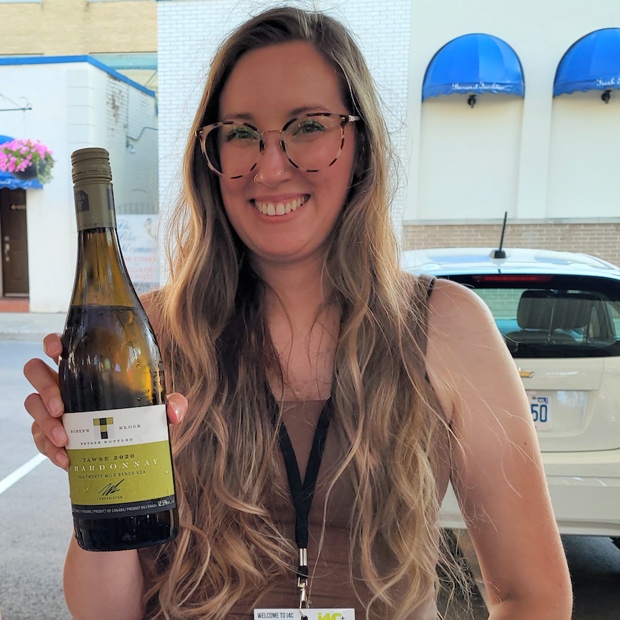
Jessica Otting, Tawse Estate Winery
Tawse Chardonnay Robyn’s Block 2020, VQA Twenty Mile Bench
While Robyn’s Block is always a unique chardonnay for the Twenty Mile Bench in 2020 it’s part of a community because of a slow, actually a very slow (as in sluggish) ferment. Didn’t actually finish until April, a remarkable happenstance because malolactic was completed back in November. As late as winemaker Jessica Otting has ever seen and it happened with all the chardonnays, save for Quarry Road. The whole cellar was like this and so what does it all mean? Perdition might be the answer but miracles happen and composure begets fortune, leading to a reward in most excellent textural deference. Alcohol and acidity are both exemplary and know this. Chardonnay left alone will find its way, unforced and uncompelled. We may be stupefied by the journey but we are most impressed by the result. Be patient with while offering up a little extra time and mind for these ’20 chards. As here with Robyn they are demure and they are at peace. Drink 2023-2026. Tasted July 2022
Thirty Bench Chardonnay Small Lot 2020, VQA Beamsville Bench
Really quite primary, an undisclosed while pleasingly reticent chardonnay from Emma Garner of gratitude and grace. The first because it thanks the Beamsville terroir and the second because it does so with soft spoken respect. A mélange of different fermentation batches, each small and precise come together for the final sumptuous and restrained blend. The tenets of fruit, acid and what ties them together is just about as seamless and easily layered as any of a Bench ilk and idiom. Not a chardonnay of style but instead stylish, not chic but surely sung with notes held, seemingly forever. Drink 2023-2028. Tasted July 2022

Mackenzie Brisbois, Trail Estate
Trail Estate Chardonnay Cold Creek Vineyard 2020, VQA Prince Edward County
From a vineyard on the Danforth Road in Hillier and young vines of chardonnay. A 50/50 neutral and second fill barrel aging for 10 months in yet another 2020 fermentation that took seemingly forever to complete. This is attributed to a hot and dry summer and also harvest, with excess humidity causing sluggish and possibly even dormant yeasts. That said this Cold Creek shows plenty of zip and zest, clocking in at 14 per cent off of 23 brix. “Early” numbers though the pH was normal (3.2). Crazy for chardonnay, at heart and for trying, with plenty of dichotomously extrapolated energy and PEC drive. Drink 2022-2025. Tasted July 2022

Two Sisters Chardonnay 2019, VQA Beamsville Bench
Fruit is entirely taken from the 1959 planted Lenko Old Block, likely the first in Niagara. Twenty per cent new wood and no real sense of malo (up to a maximum 30 per cent) but says winemaker Adam Pearce, “we’re not looking for that route.” A brilliant chardonnay, cohesive and smart, taut and slowly revealing itself. The right and righteous stuff. Last tasted July 2022
If unoaked takes full advantage of a terrific 2019 growing season then surely the oaked chardonnay will go after it with uninhibited abandon. Perhaps but just one sip and you see the cool demeanour, the artist restraint and the blessed balance afforded throughout the wine. Only hints of toast, smoulder and buttery biscuit wisp on through while the purity of warm terroir raised Niagara chardonnay shines, as it should. Most excellent work here from Adam Pearce and team. Drink 2021-2025. Tasted September 2021

Guest Chardonnay
Boschendal Chardonnay 2019, WO Elgin
The Elgin blocks are 15 kms from the Indian Ocean with sites ranging from 200-500m above the sea level and surrounded by mountains. Grown at an average of 300-plus metres at a latitude of 31.15 South. A prime example of the Elgin style, citrus led, stony and flinty from weathered shale soils but there can be no dispute about the fruit richness and sumptuous tactility for how this settles upon the palate. Thankfully a feeling of sea breeze passes through and maintains the freshness. Drink 2022-2024. Tasted July 2022
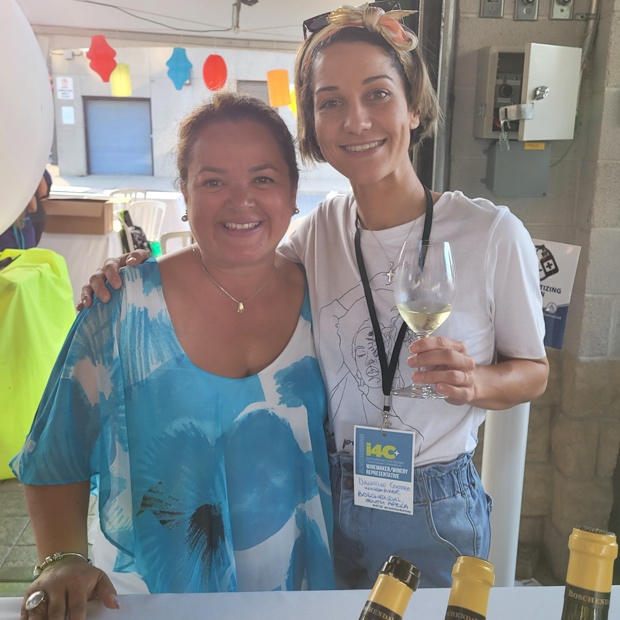
Ana Norris (Santillán) and Danielle Coetsee, Boschendal
Boschendal Cap Classique Jean Le Long Prestige Cuvée Blanc De Blancs 2009, WO Stellenbosch
Long on the lees (gotta be 120 months-plus) and as a 2009 well within a Cap Classique vernacular still with the “Méthode” verbiage at the lead. Long since developed its ceiling of complexity and although those last 12-18 months may have done little to advance, accelerate or diminish the returns, how can it even matter. Just consider the greatness here. Eloquently complex by nature and also design, all about fruit and earth, liquidity and dusty decomposition, delicasse and deconstruction. The level of acuity is commanding and beyond commendable for a comestible this long in reserve. A confession of wishing for just the slightest lessening of dosage, to avoid a softening and raise the energy bar. Otherwise this would be tops. As it stands it’s pretty special. Drink 2022-2025. Tasted July 2022
Catena Chardonnay Appellation Tupungato 2020, Mendoza, Argentina
Only Tupungato will do for chardonnay as this “High Mountain Vines” will do, equipping what could be the roundest, softest, creamiest and most delicious fruit set with a blast of freshness and atmospheric drive. This is exactly what you can expect from Catena’s work in specific appellative chardonnay, drilling down into the dirt of a place within a place with the same conviction found in their more expensive wines. No compromise. Drink 2022-2025. Tasted July 2022
Catena Alta Historic Rows Chardonnay 2019, Mendoza, Argentina
Kind of surprised how many years have passed since last seeing this über specialized Tupungato chardonnay in a VINTAGES release and thankful to see its auspicious return. The highest elevation and prized fruit from quantified rows put the specificity and trenchant expectation into a chardonnay of indelibly stamped, site explorative and barrel programmed richness. Truly fleshy but also elastic and stretched varietal wine of not only acumen and desire but also depth and understanding. The White Stones may be Catena’s chardonnay prize but do not sleep on this wine. It delivers all you could want from producer, place and grape. Drink 2022-2026. Tasted twice, July 2022
Côteau Rougemont Chardonnay La Côte 2020, Québec
The Robert Family takes chardonnay to the next level with their south facing vines on slopes of soils dotted by pebble and schist. A blessed sun dripping vintage for Québec chardonnay that takes full advantage of more climate change heat units and good fortune for no 2020 frosts. Crisp and crunchy to the nth degree, just reductive enough to stand taut and ever so slowly releasing its charm. Next chapter and a win win all around. Drink 2022-2024. Tasted July 2022

Domaine Baud Blanc De Blanc Brut, Crémant Du Jura
Varietal chardonnay that sees a year of lees aging with a dosage to reach the desired Brut. A richness and also dried herbal notes plus fennel that is offset by a creamy sweetness melting and melded through the pictorial texture of a wine so sharp and yet so soft. One imagines the Baud family being led by such humans and when a wine acts as an expression of they, well isn’t that the point in a wine like this? Drink 2022-2024. Tasted July 2022.
Baud’s Crémant is made in true Blanc de Blancs style, from 100 per cent chardonnay and though faintly if beautifully oxidative, the cuvée pulses with great energy. The scents of fraying ginger batons, scraped orange skin and baking almond cookies are all a treat for the olfactory. Just enough but not too much sweetness fleshes the the body to get down to density in mouthfeel but never abandons its airy character. A terrific Champagne alternative that was disgorged in October of 2017. Drink 2018-2022. Tasted April 2018
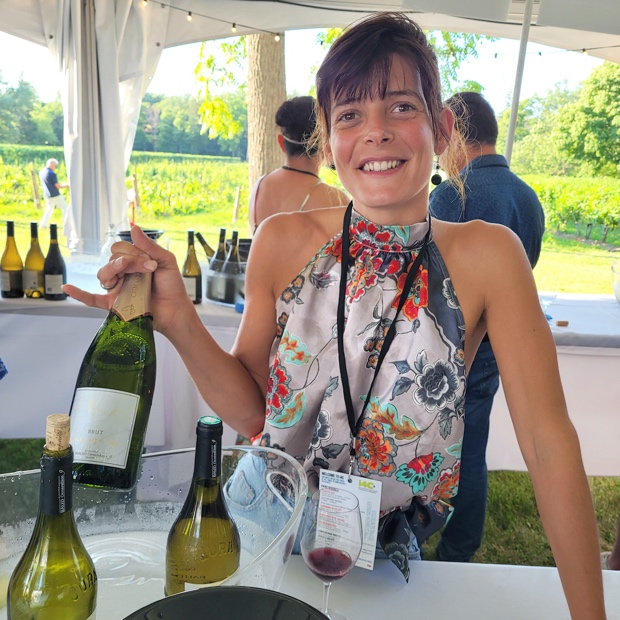
Clémentine Baud, Domaine Baud
Domaine Baud Cuvée Flor Côtes Du Jura 2020, Côtes Du Jura AOC
Clémentine Baud took over the family estate with her brother six years ago. The first father to daughter transition and with many to follow. The estate dates back to 1742, started by Jean-François. They farm 25 hectares, Clémentine’s father started with five and grew to 19 hectares when he retired. Picking for Sparkling now seems to happen in August, save for the difficult 2021 vintage. In 2017 70 per cent of the harvest was lost to the frosts, 50 in 2019 and 80 in 2021. “We have over 40 old varieties in the Jura, important for diversity, including those not allowed under the rules of the AOC,” tells Clém. The fruit for Cuvée Flor is grown at a latitude of 46.73 North and though very much a cool climate place for chardonnay the threats of warmer winters and seasonal frosts has wreaked havoc over the past 10 years. A chardonnay of remarkable lustre, concentration and purity, worked by way of oxidative aging, low alcohol expectation starting at 12 and finishing no higher than 14 to 14.5. A floral chardonnay, not one related to yeast and surely a pretty in Jura wine. From the younger vines, phenolic and hinting towards though remaining clear of emerging boozy. Filled with flavour, hazelnut and praline, peach and yellow plum. A world of its own. Drink 2022-2025. Tasted July 2022
Domaine Des Deux Roches Altugnac “Terres Amoureuses” 2020, AOP Limoux
From land at the edge of the Languedoc, on the Pyrenean foothills, “where the vines flirt with the scrubland.” A chardonnay of amorous lands, a golden hue of fortune and really fine balance. Light on its feet, forming a small wake, chardonnay of prosperity, dreams, space and a garden of thought. Alluring and inviting, ease of wood, spice and bites throughout. Drink 2022-2024. Tasted July 2022
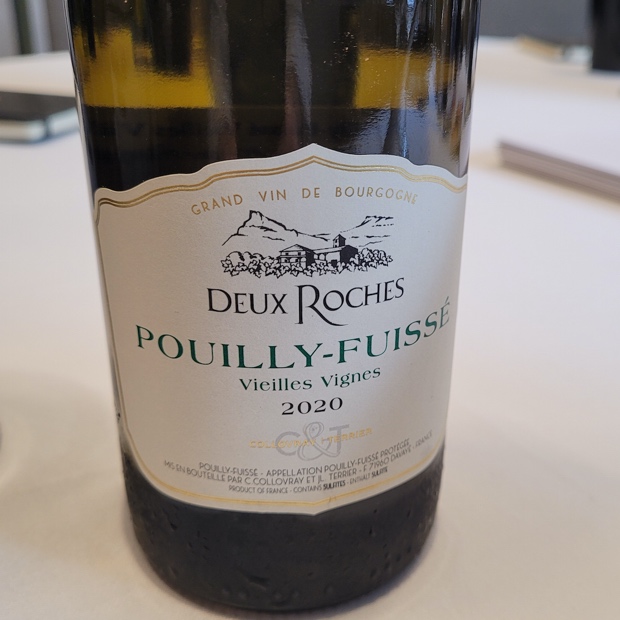
Domaine Des Deux Roches Pouilly Fuissé Vieilles Vignes 2020, Bourgogne aoc, France
There can be no doubt that an old vines cuvée in the hands of Deux Roches gifts impeccable and earnest profundity coupled with culpable concentration. A touch reserved in restraint though again expectation dictates that energy will release as the wine opens and ages. All the orchards are on the nose, transitioning into flavours full, layered and built by a liquid textural weave. Expansive chardonnay. Drink 2022-2026. Tasted July 2022

Joseph Ryan, Ernest Vineyards with Brooke Husband and Kelly Mason
Ernest Chardonnay Joyce Vineyard 2019, Sonoma Coast
Erin Brooks started the vineyard 10 years ago, as proximate to the ocean as much as any. West Sonoma Coast, now a new AVA with Brooks at the forefront of making that happen. Down at the bottom of the AVA, at 400ft of elevation, of marine bed, volcanic activity and metamorphic matter all present in one vineyard. Joseph Ryan is Winemaker and Vineyard Manager. Southeast facing at 38.44 North latitude on Goldridge soil, a sandy loam and a really mitigated diurnal shift of temperatures between 45 and 85 degrees (F). As such there is little cold or heat shock, plus what is gained by being so close to the ocean. Truth be told this is Sonoma Coast times 10 with a driven intensity of parts bloody captivating. Fruit and acids dancing intertwined and inseparable, unrelenting in a dizzying twirl of chardonnay wind and dust. “Oh, loving her was easy. The easiest thing in the world.” Hiss Golden Messenger. Drink 2022-2027. Tasted July 2022

Andrea Barker and Grant Chisholm, Foxtrot Vineyards
Foxtrot Chardonnay 2020, BC VQA Okanagan Valley
Quite wooden and also lean, tart and speaking in the kind of chardonnay tones that say professional and successful. Apples of greens and yellows, tart and creamy at the same time, blessedly flavourful if simply one dimensional. Solid and classic for a warm weather season out of a cool climate location losing that plus with every passing year. Drink 2022-2024. Tasted blind at NWAC2022, June 2022 and at 14C22, July 2022
Foxly Chardonnay 2020, BC VQA Okanagan Valley
Foxly is Foxtrot’s second label from Osoyoos and Similkameen fruit (as they only grown pinot noir on the Naramata Bench). This mix of northern and southern combines tension with roundness, two best worlds into one, hvac and evac. Fresh and taut with a downy cream centre. Last tasted July 2022
Reductive to the point if just a bit stinky, not egregious mind you but the funk is in. These lees are in charge and upon the palate with a hit of true juicy fruit attacks, with beneficial fervour. In fact the lees do and are everything, living and dying with adamant behaviour to direct what will happen at every step along the way. Keep working with this chardonnay. It truly wants to offer up a just and pleasurable reward. Drink 2023-2027. Tasted blind at NWAC2022, June 2022
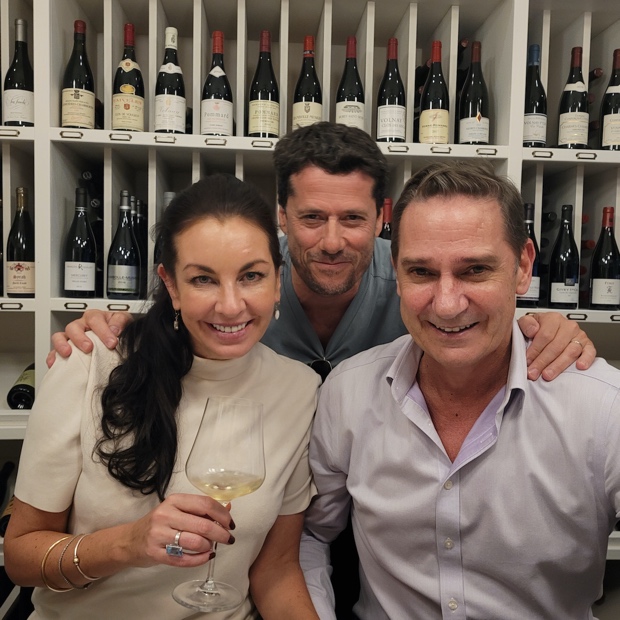
With Olive and Anthony Hamilton Russell
Hamilton Russell Vineyard Chardonnay 2021, Hemel-en-Aarde, South Africa
A new return to a manageable vintage of warmth and generosity in which the beauty of Hemel-en-Aarde chardonnay comes across with sweeping charm, just as a vista will take in the scroll of hills, mountains and eventual fall, 100 kilometres away into the sea. The taut nature, tight control and expertly wound fruit behaviour follows a line of HR acidity like never before. The magnificence of the balance occupied by parts so known like home is what emanates from this chardonnay and the gracious people who make it. Can’t think of much better in South Africa. Drink 2023-2028. Tasted July 2022
O’Rourke Family Estate Chardonnay Twisted Pine 2020, BC VQA Okanagan Valley
O’Rourke’s Family Tree brand from Lake Country in the northerly Okanagan just feels warm and nurturing, a 2020 Twisted Pine chardonnay in this glass with drawn butter, soft brioche and mulled spice. Lightly caramelized, with soft serve vanilla and ease of amenability. Oak is a true factor though it melts nicely into the background of the wine. This is chardonnay of a deeply calming presence. It is warm bread. It is dry shelter. Drink 2022-2025. Tasted July 2022
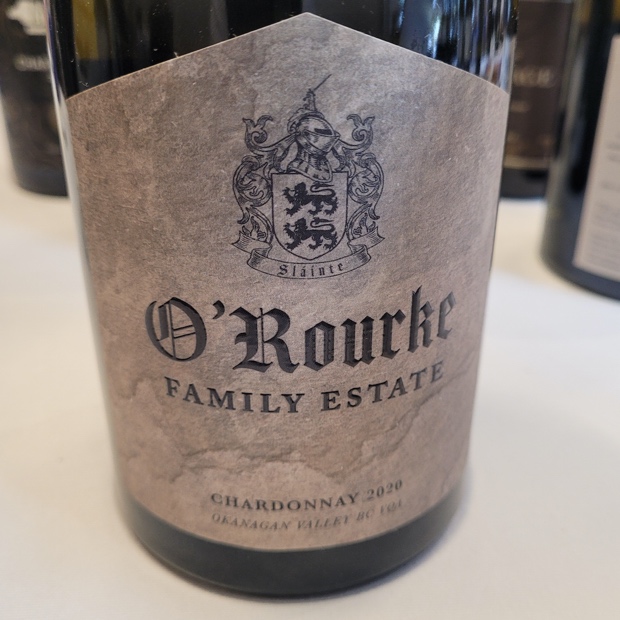
O’Rourke Family Estate Chardonnay 2020, BC VQA Okanagan Valley
Lake Country is one of the newest geographical locations of eight or nine wineries in the Okanagan and really only minted a month ago. The furthest north in the Valley and ostensibly the coolest as a result. First chardonnay by O’Rourke Family Estate with winemaker Nikki Callaway (famed for her work at Quails’ Gate). A young at heart wine and project with vines just three to six years of age grown at a latitude of 50.05 North. A fruit salad because it comes from all the blocks and clones on the property, built above ancient glaciers and caves. All indigenous ferments, with great freshness in abundance. A sharper expression than the Twisted Pine, with more snap, crackle and bite, not to mention pop. Hints at a reductive flintiness though it’s really quite open and even generous. Really quite effusive and brings chardonnay fruit to the fore, celebrates its Okanagan fullness and is developed enough to be ready and willing for to please. Drink 2022-2024. Tasted July 2022
Paddy Borthwick Chardonnay 2020, Wairarapa, New Zealand
An extension of 2019 to be clear, of flint and reduction as well, though less so in this vintage. Same sectarian or free thinking where herbs and lime get as much playing time as the stony qualities showing tight and tart in this 2020 wine. Caramel apple in the most seductive way, a bite through savoury spun sugar into the flesh of apples and or pears plucked straight from the tree. Flavours are ripe and seductive, at times verdant, other times spiced. No missing the barrel here. Drink 2022-2025. Tasted July 2022
Planeta Chardonnay 2020, Sicilia DOC
From 43.25 North latitude. Chardonnay comes from two vineyards, Storico which is the large white rock at 270m above the Menfi lake and Marrocoli, where red grapes (cabernet franc, merlot and syrah) really thrive. Here chardonnay is given roundness to mix with the stoic-stony and intense directness of what it could have been. A place of vibrations and nerves and so Marrocoli is needed to tame and soften Storico’s blunt edginess. That it does, injecting peach fleshy sunshine into the linearity of the wine. Keep in mind that 200,000 bottles a year are made and that doesn’t even keep up with the demand. Arch classic Planeta bread and butter wine, also in style. One of the planet’s great chardonnays of double Q effect. Quantity and quality. Drink 2022-2025. Tasted March and July 2022

Ronan Stewart, Quails’ Gate Estate Winery
Quails’ Gate Chardonnay 2020, BC VQA Okanagan Valley
Tasted with Rowan Stewart and in agreement that this is meant to be the freshest possible, a chardonnay of lemon zest and glaze, spicy piques and back bite. Acidity is the factor in a chardonnay lacking no moments of ripeness and can be round when needed. In other words it reacts and shapes to the palate’s needs, doing so simply and with no wasted movements. Drink 2022-2024. Tasted July 2022

Quails’ Gate Chardonnay Stewart Family Reserve 2019, BC VQA Okanagan Valley
From vines growing on Mt. Boucherie, a volcanic steppe right above the winery. Whole cluster and barrel fermented, combination of new and used wood, malo, lees and regular stirring. All because the top chardonnay fruit in the Stewart household wants and can handle this level of elévage truth, seeks the richesse and desires uncompromising complexity. A chardonnay rising and swelling with fruit flavours, spices and then lingering long after the liquid is gone. My goodness length is truly a six letter word. Like bezazz, jazzbo, pazazz and pizazz. Drink 2023-2027. Tasted July 2022
Vignoble Domaine Du Fleuve Chardonnay 2020, Québec
The drive for chardonnay to thrive in Québec vineyards is kept alive with this linear and driven example from de Fleuve. It is not good enough to just make chardonnay in the province and call out success. The variety must ripen well, find that sweet spot between phenolic and layered, in the zone where acids lift yet never lie. This does most things admirably well though there are some moments where sulphides and esters creep in. Drink 2022-2023. Tasted July 2022
Good to go!
godello

Twitter:
Instagram: mgodello
WineAlign
